Hoi An is one of the most picturesque towns in Vietnam. From the 16th century through the 18th century Hoi An was considered the most important trade port on the South China sea. The town has retained much of the traditional wooden architecture and overall flavor of that time. There are scores of restaurants, coffee shops, antique shops and custom tailors in this small town. There are also scores of both Asian and Western tourists meandering through its tight streets.
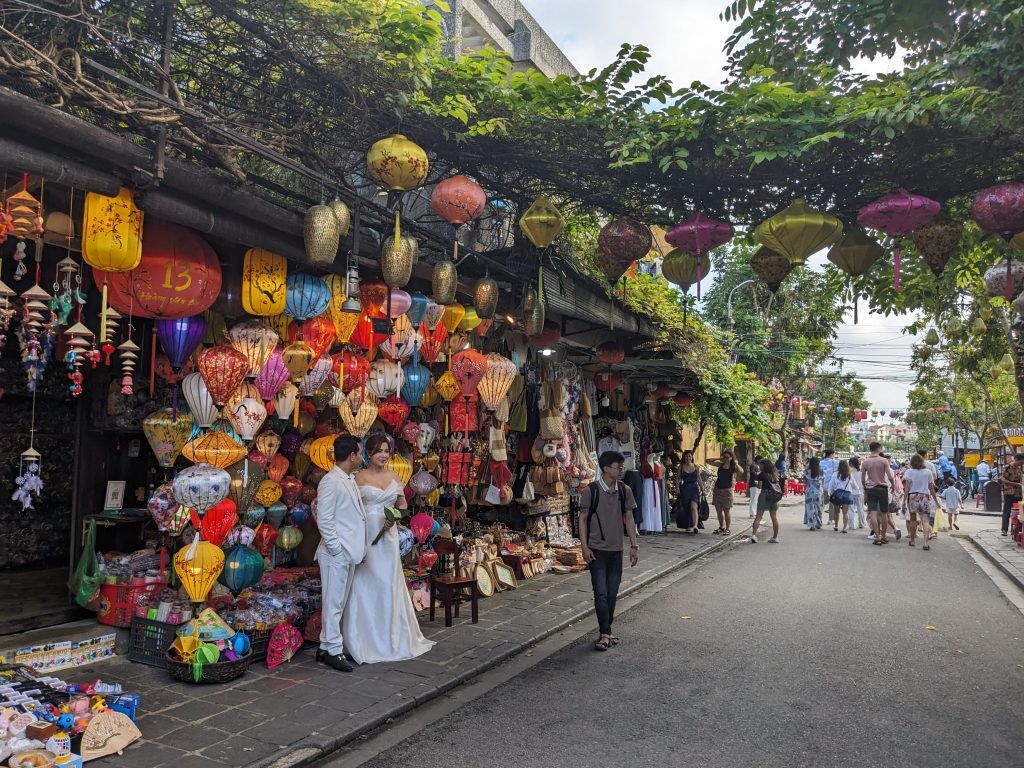
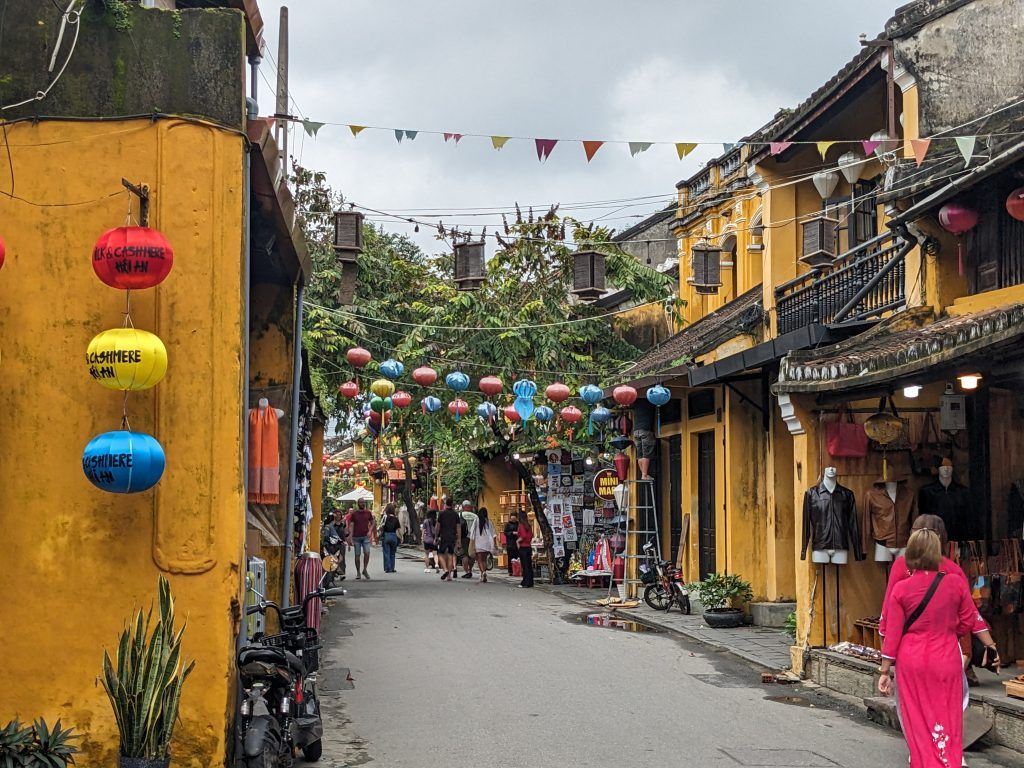
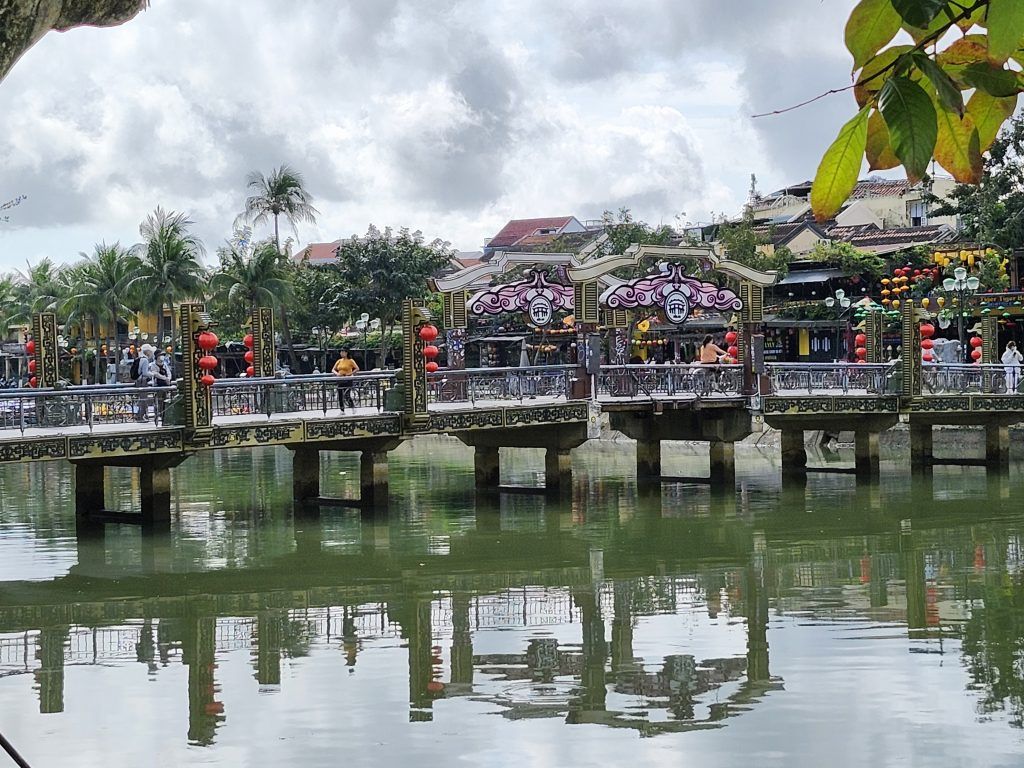
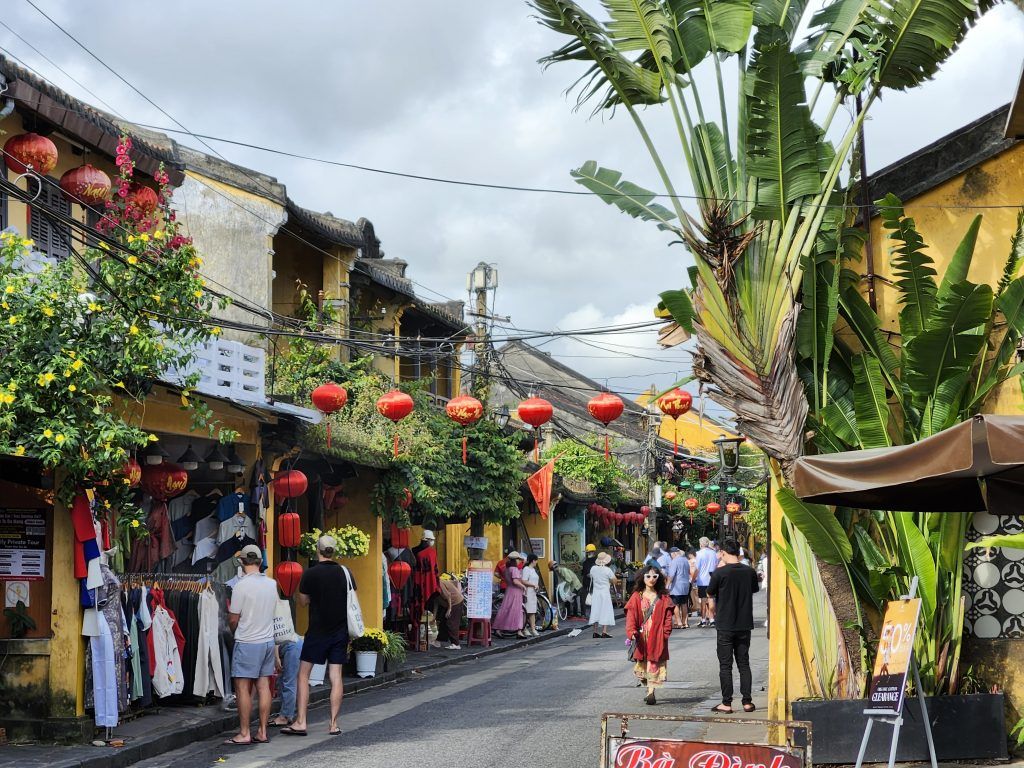
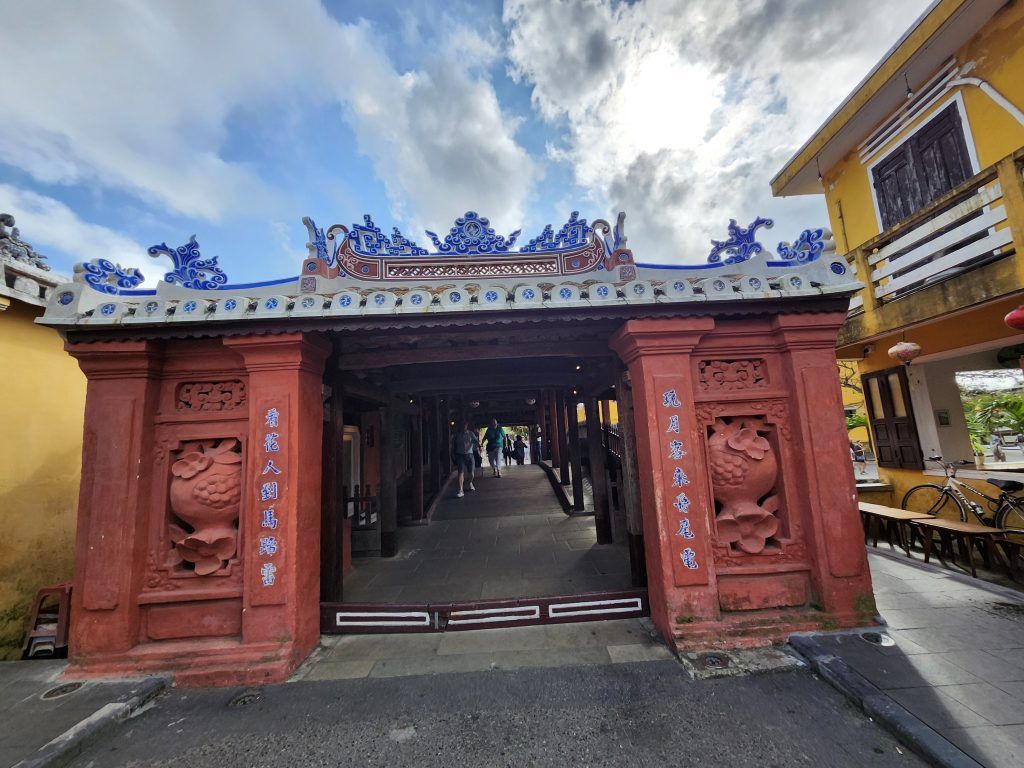
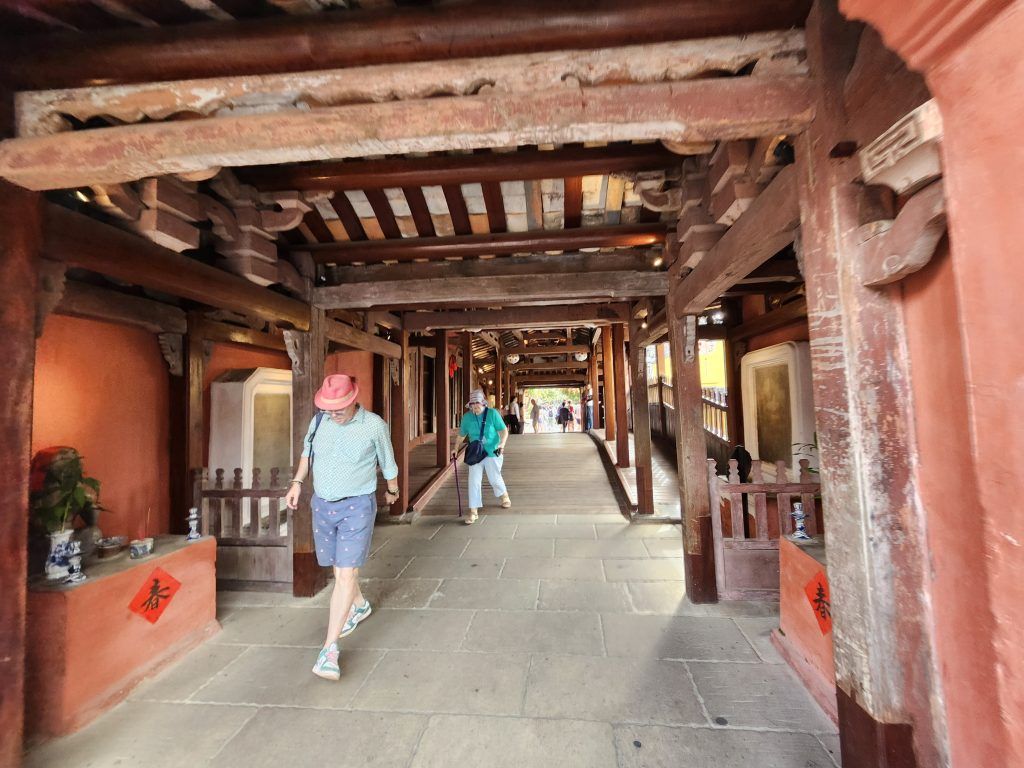
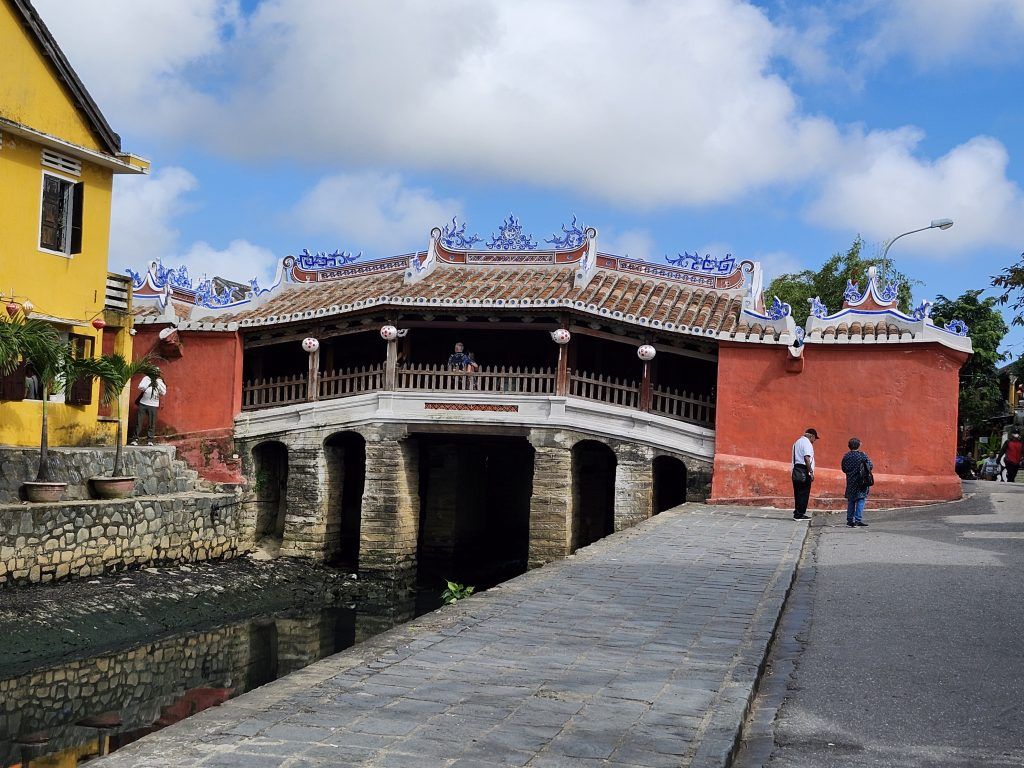
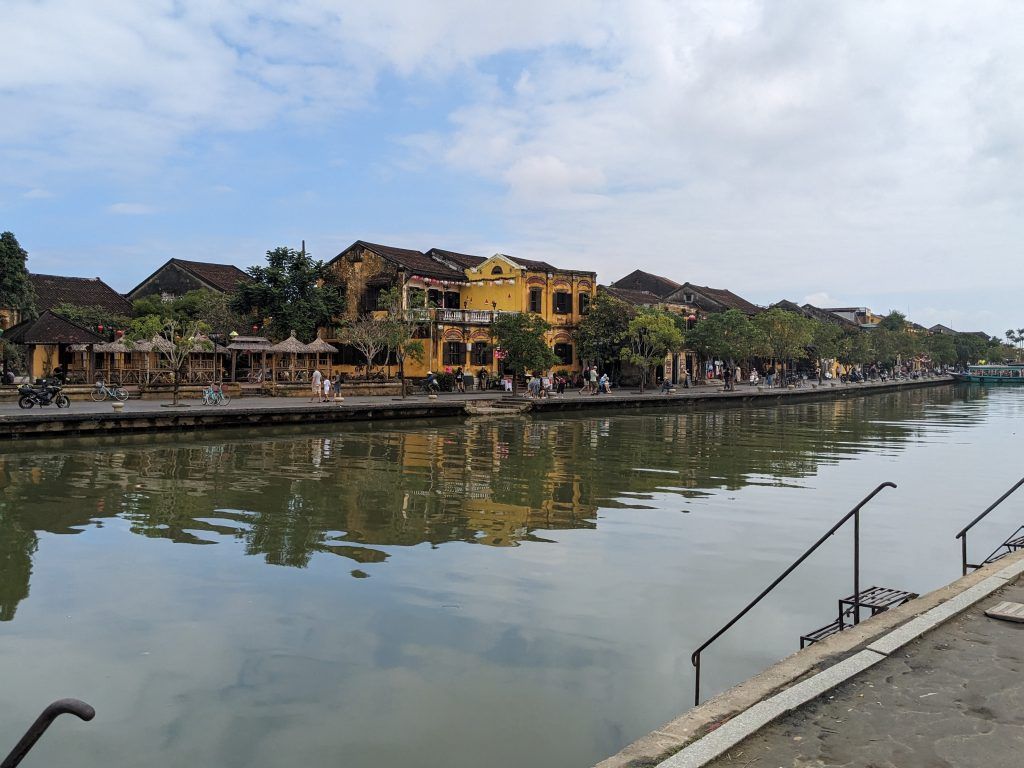
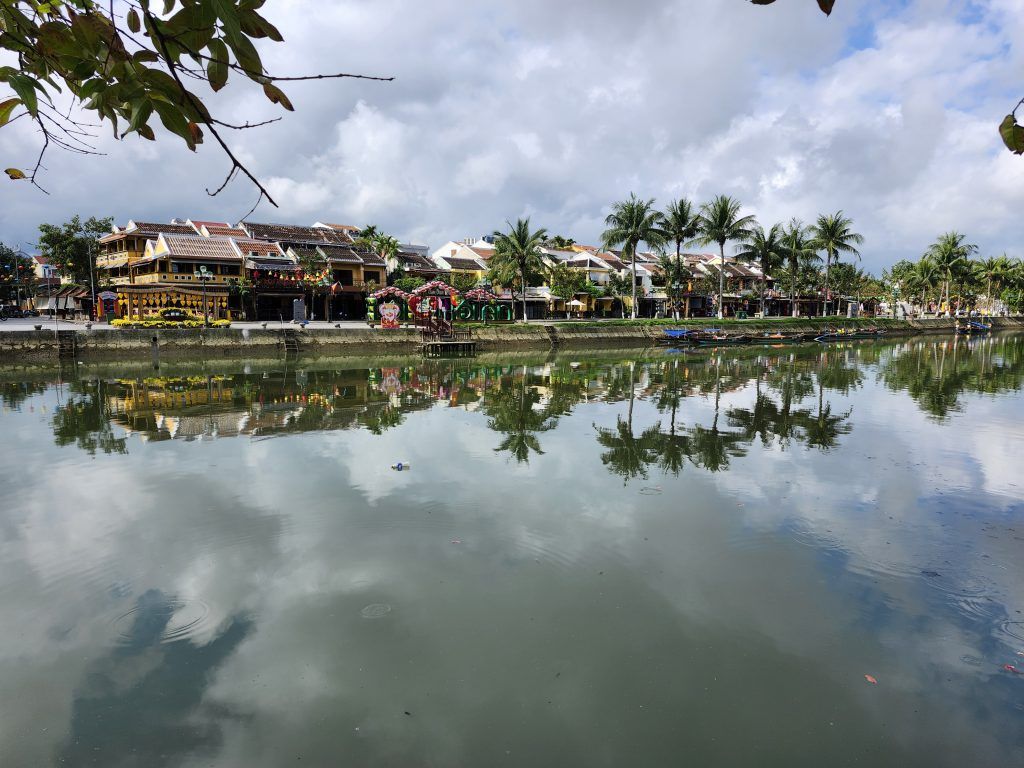
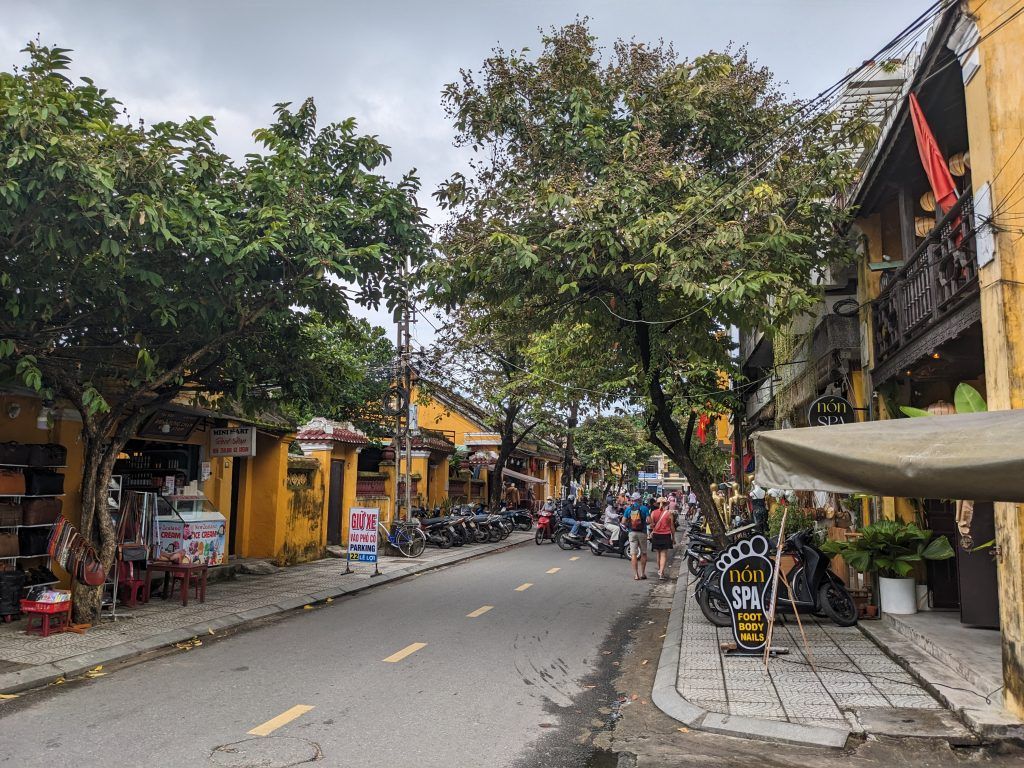
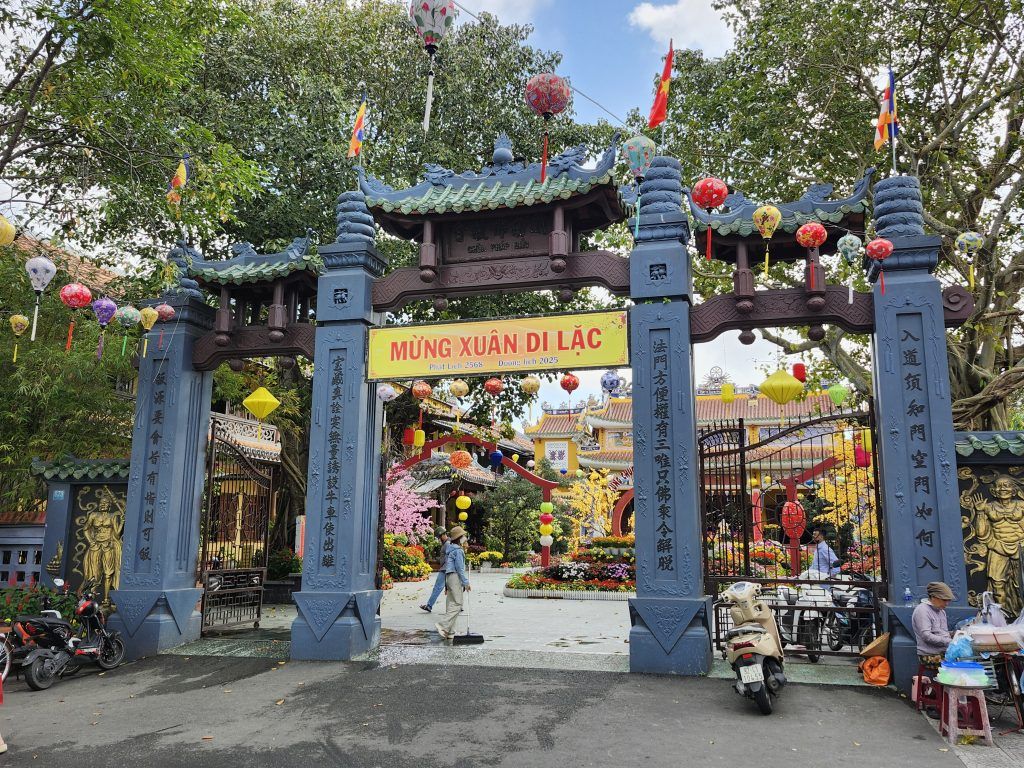
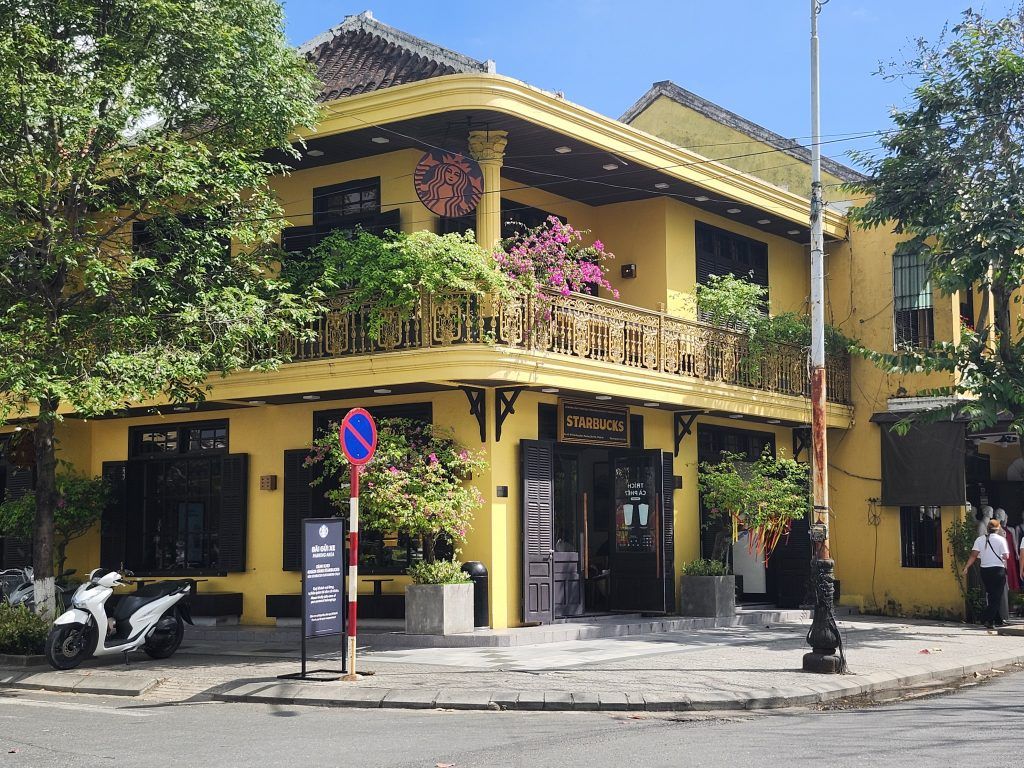
Some of the original buildings facing the Thu Bon River.
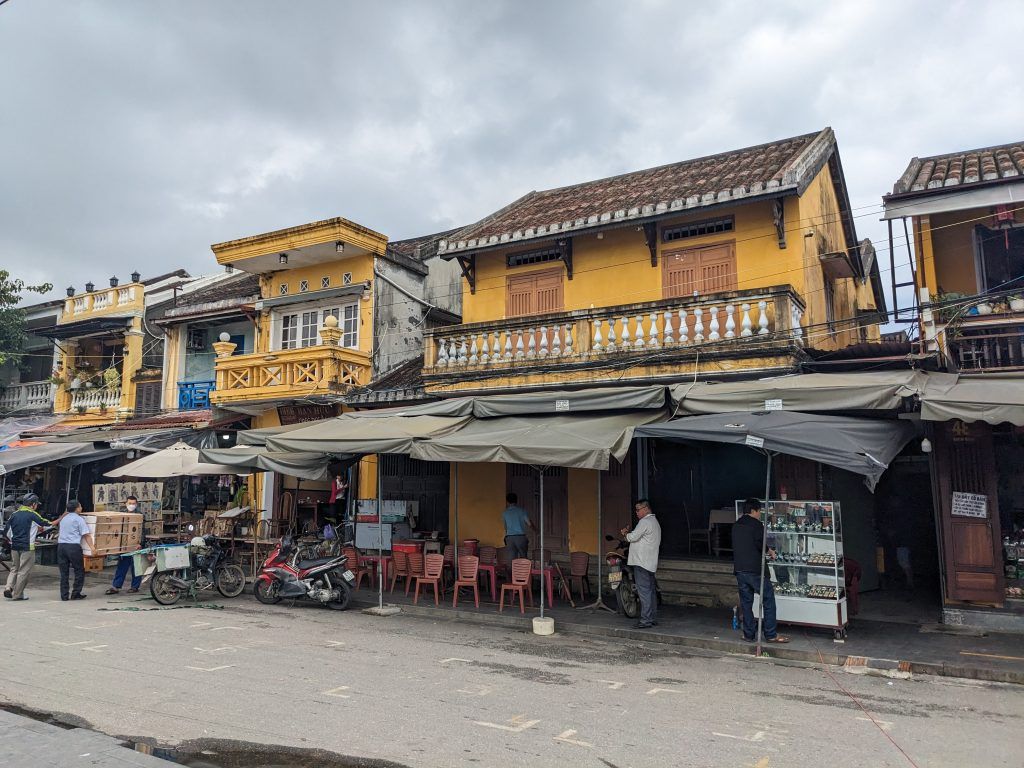
One of the many nice custom clothing shops built within the charming atmosphere of these old buildings.
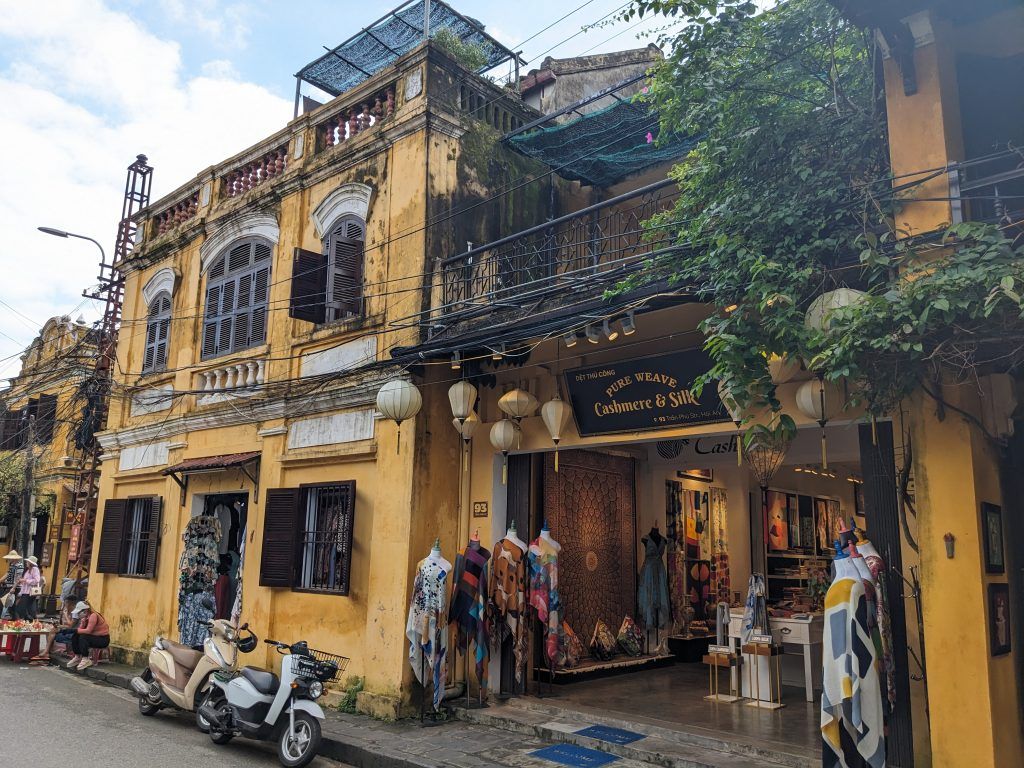
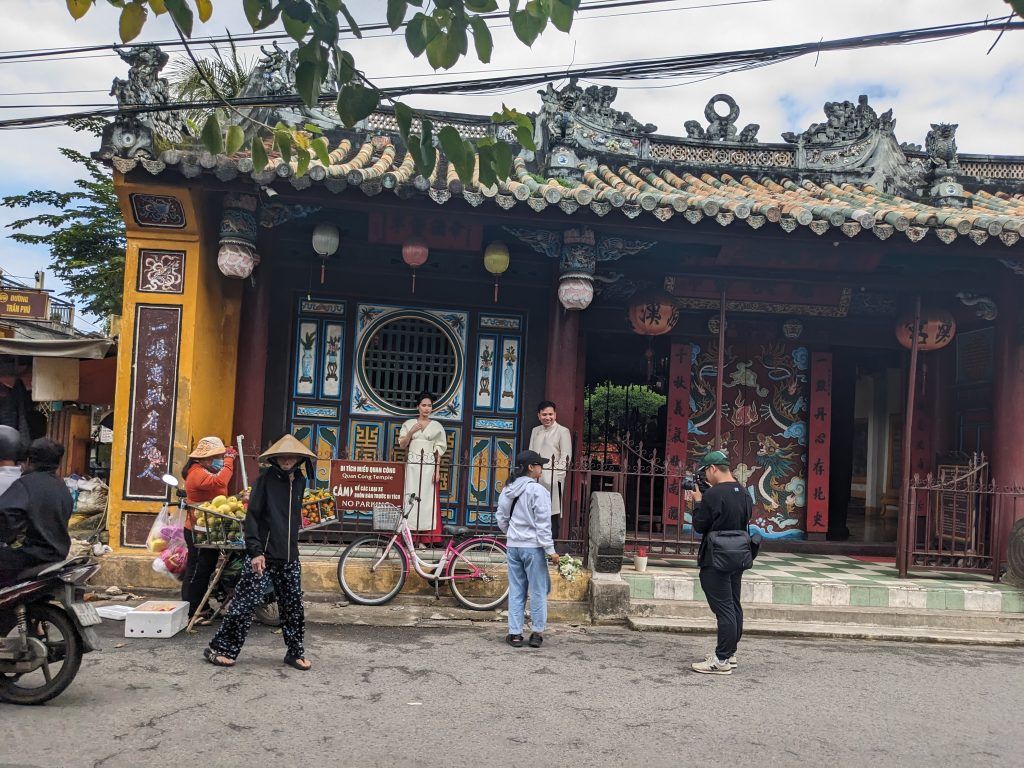
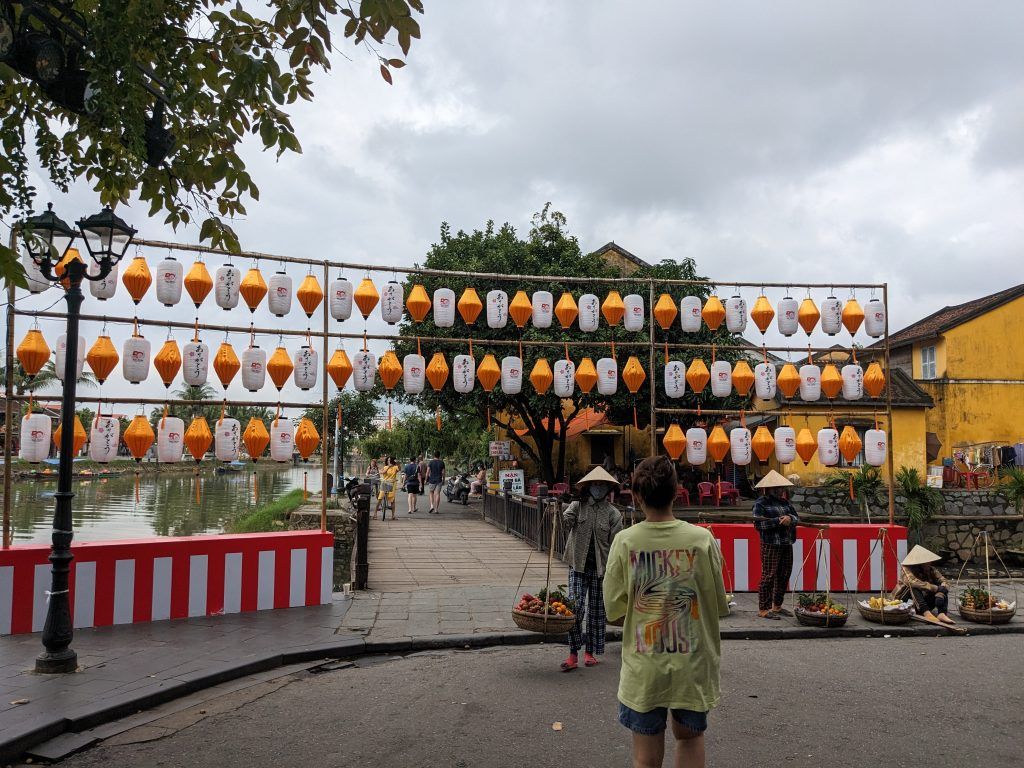
The main market occupies a big space in the center of town and there’s both inside and outside sections with all kinds of food.
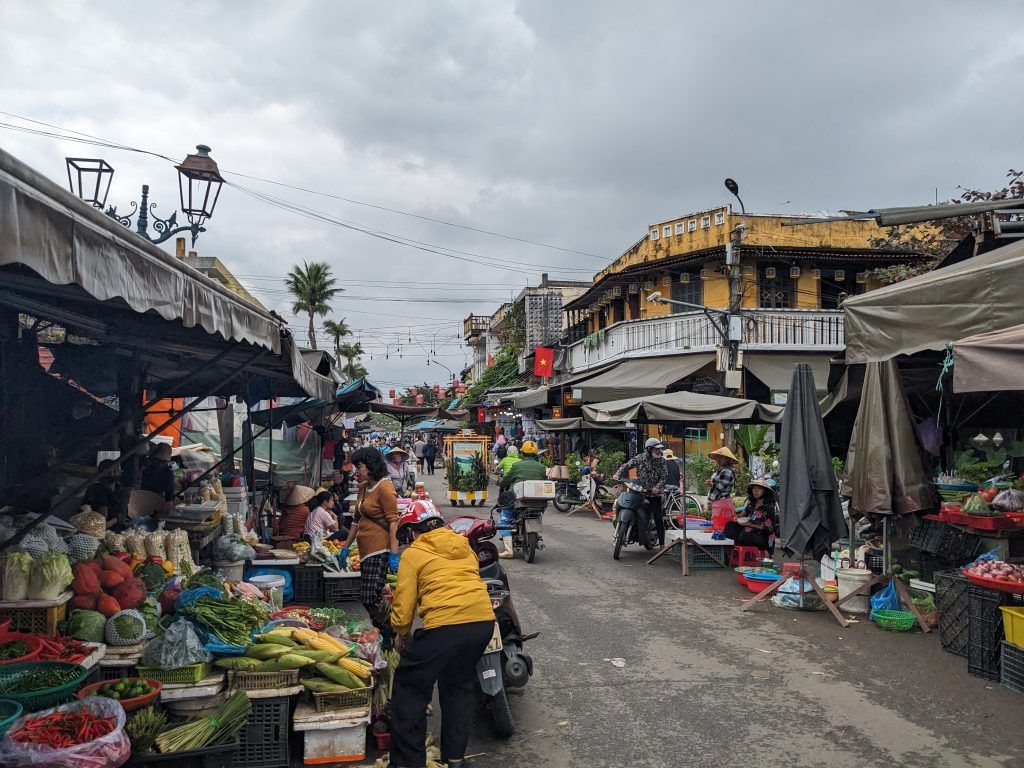
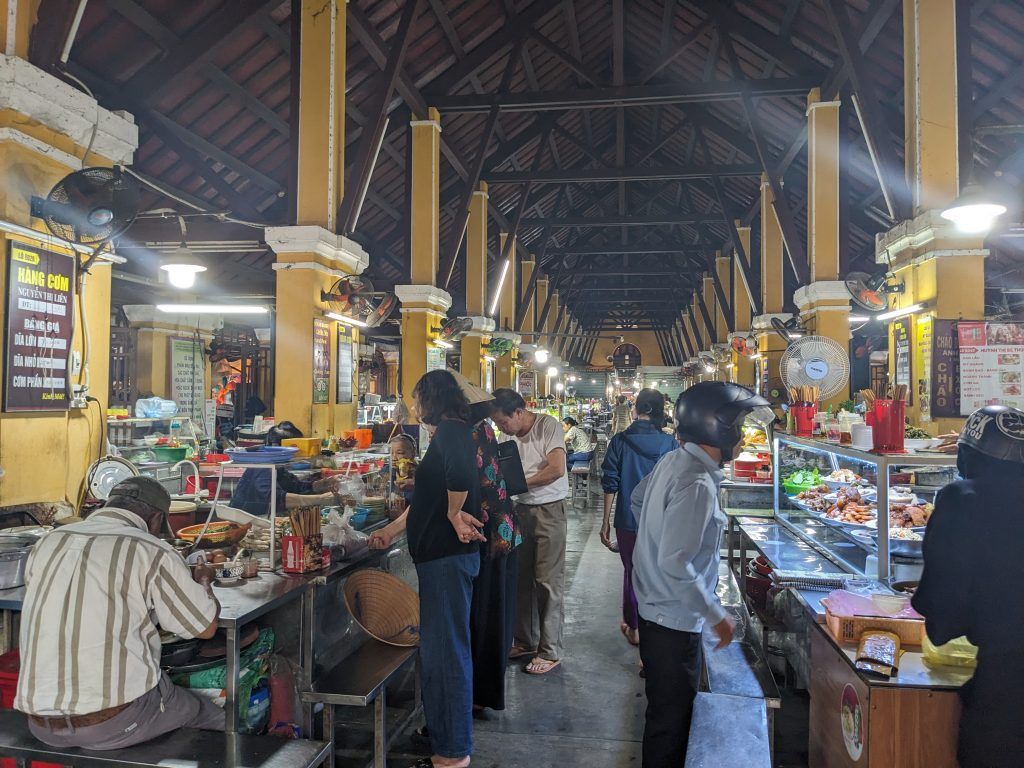
There were a significant number of Chinese and Japanese merchants living in Hoi An that created a strong influence on its architecture. A number of the original homes and temples remain as nice tourist attractions.
One of these homes is the Tan Ky house. It was built two centuries ago by an ethnically Vietnamese family and has been preserved through seven generations, showcasing both its Japanese and Chinese influences.
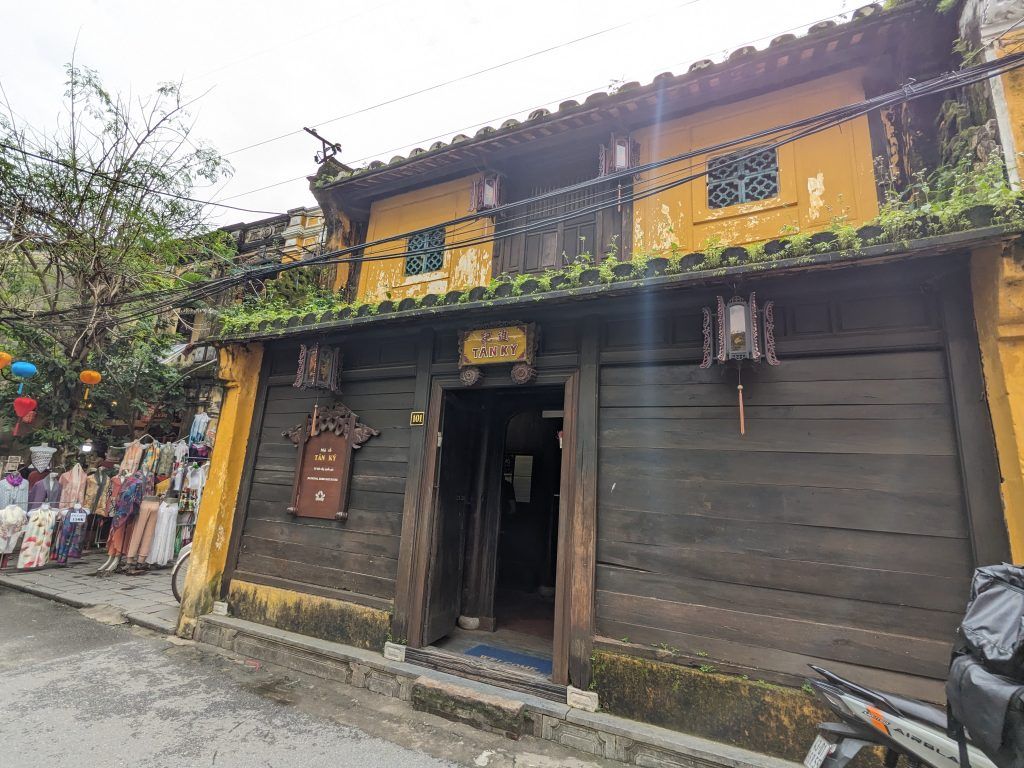
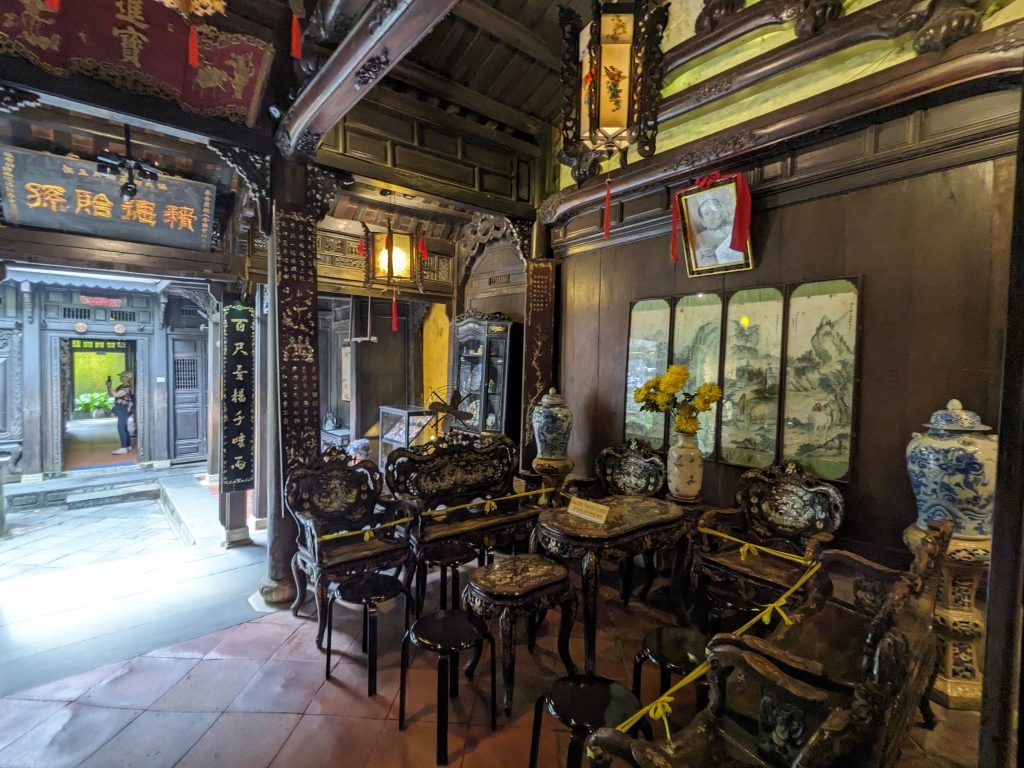
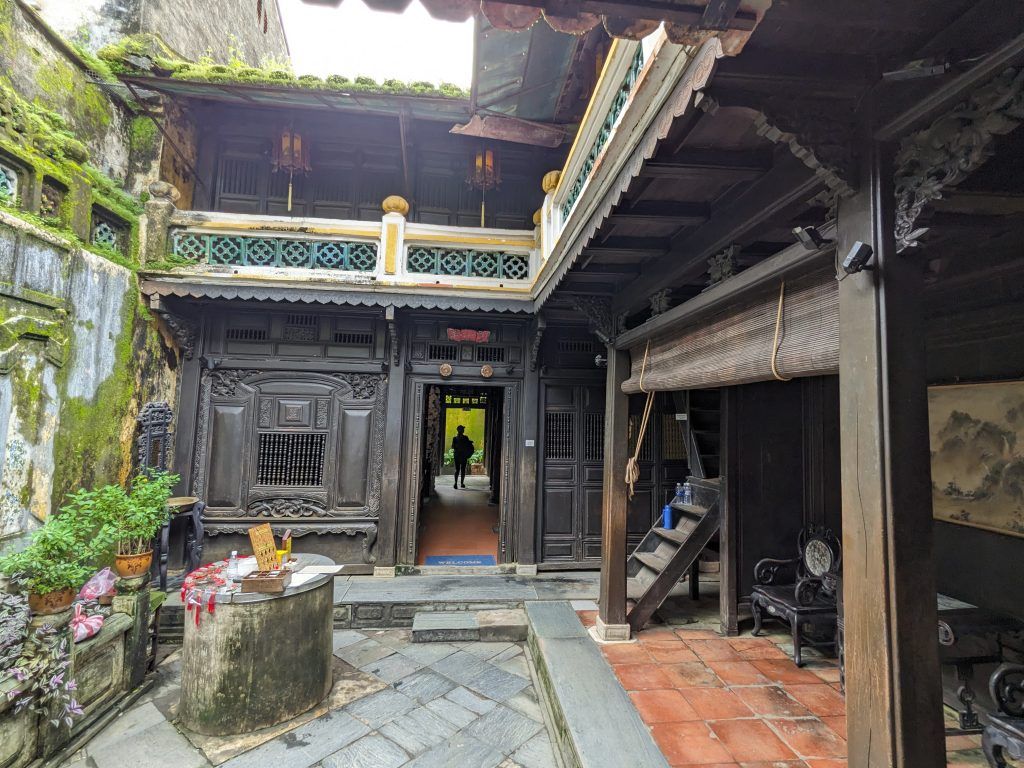
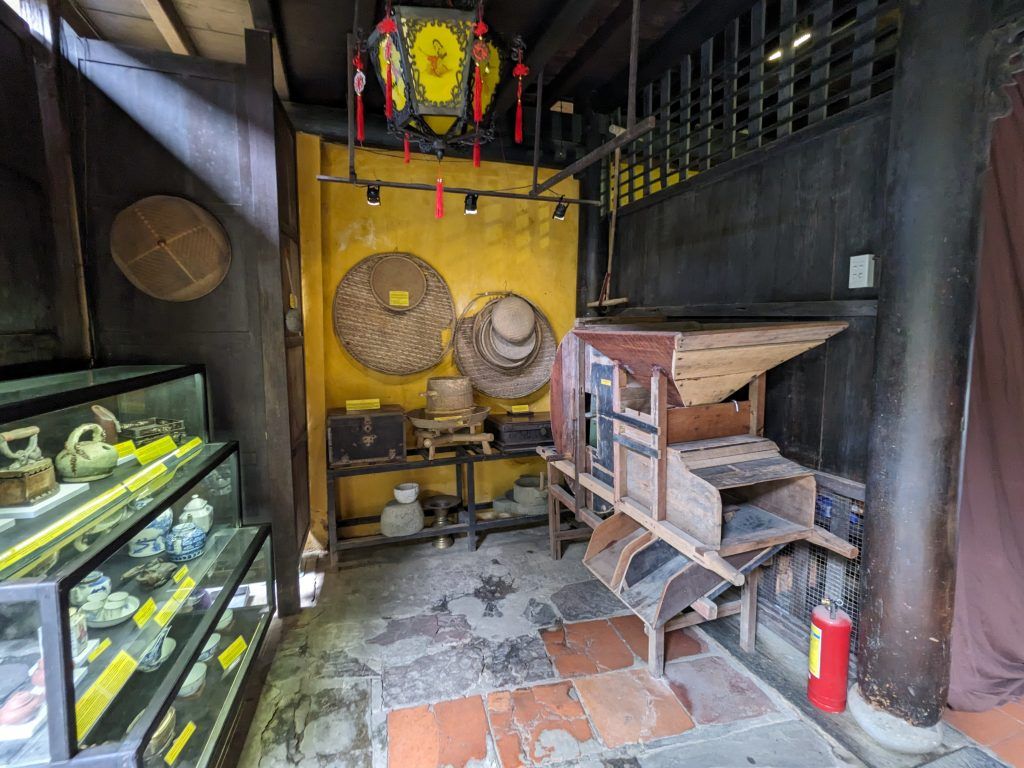
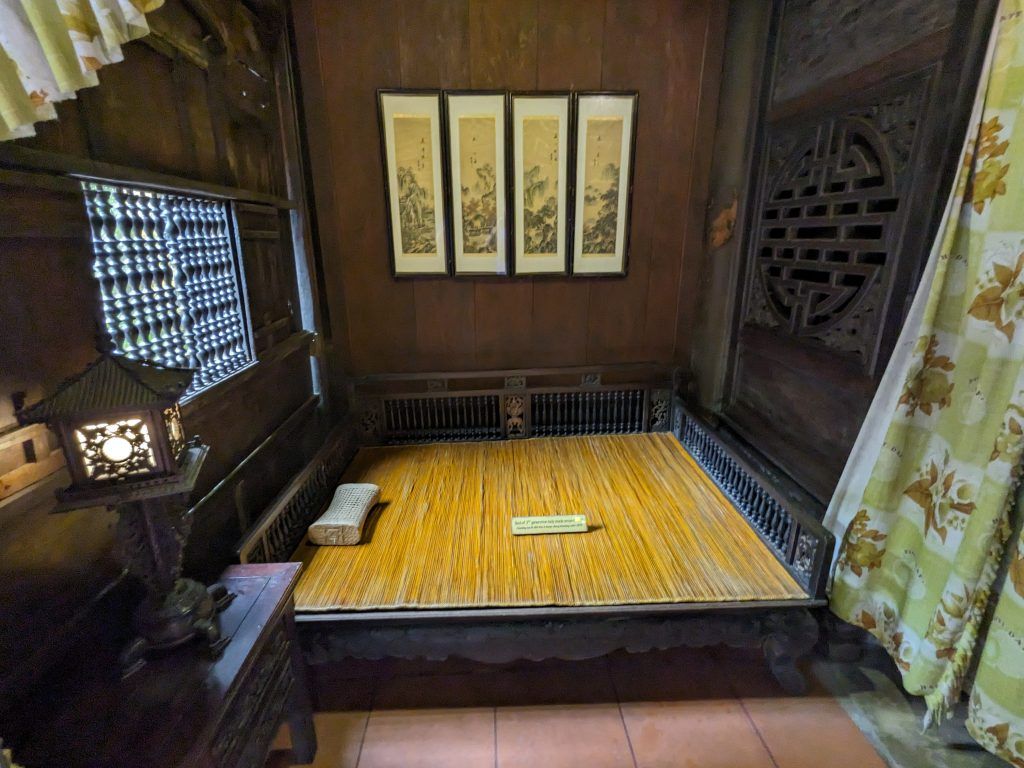
Another example is the Phung Hung house. It was built in 1780 by a Vietnamese merchant who named the house “Phung Hung”, which meant “Prosper” in Vietnamese. The house had been a shop selling products such as cinnamon, pepper, salt, silk, chinaware and glassware. The present owner is the eighth descendant of that original merchant.
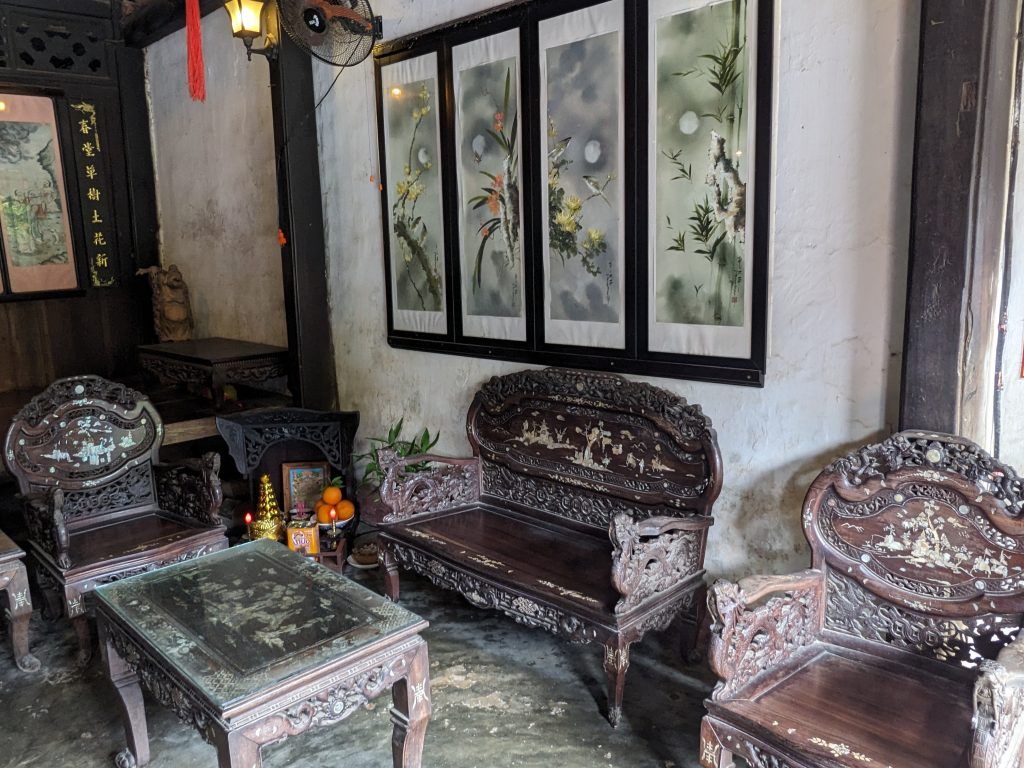
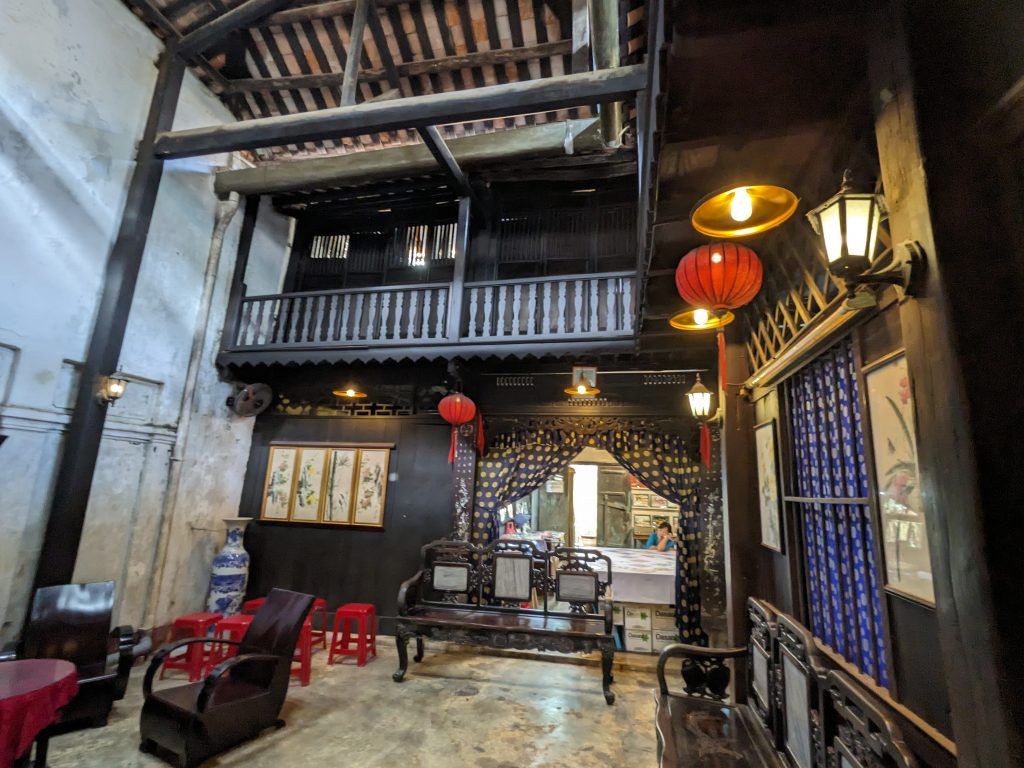
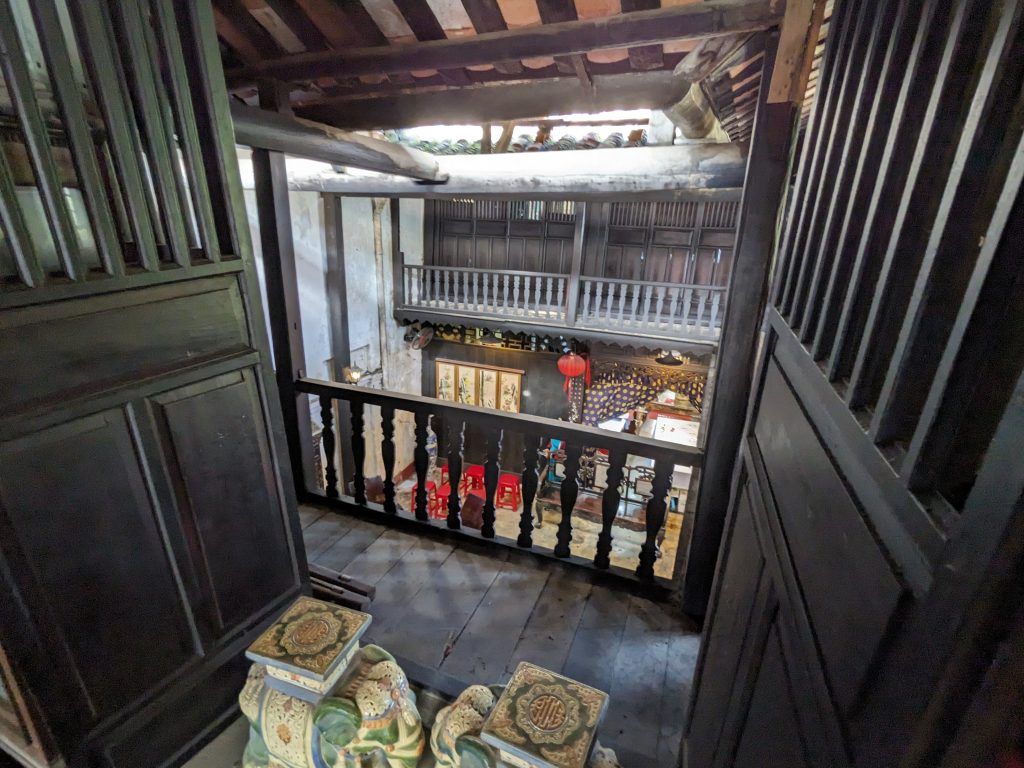
From the balcony of the house looking down on the street below.
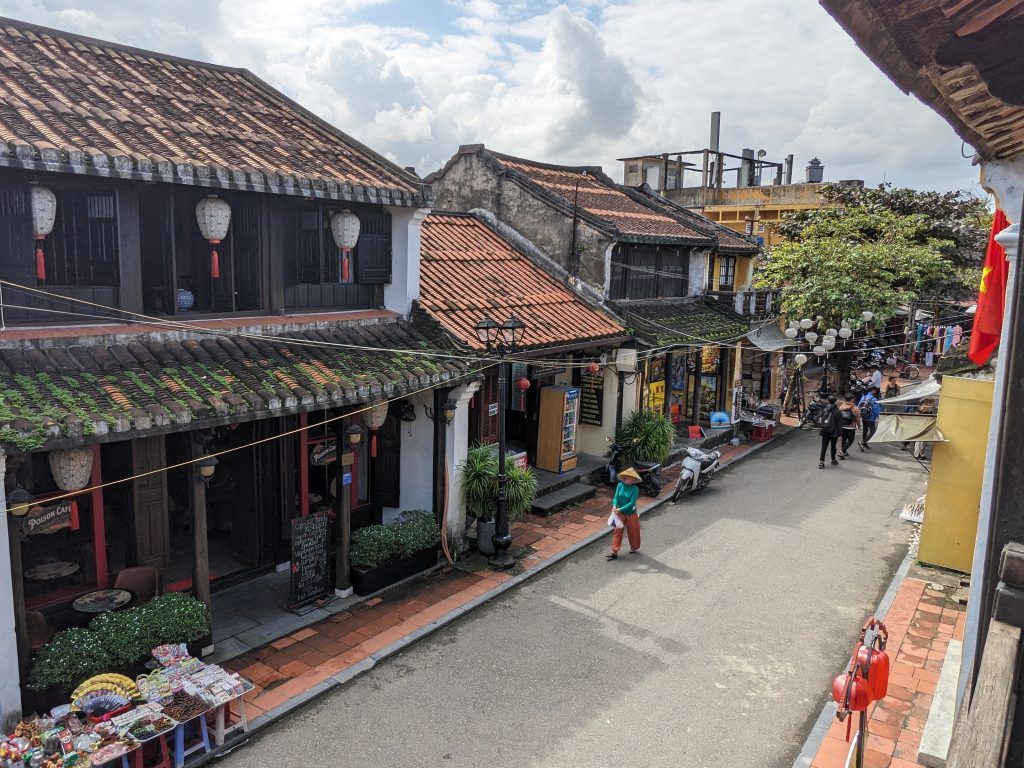
The Cantonese Assembly Hall was built in the 18th century by Chinese merchants as a place of worship and to act as a meeting hall for events and networking. It’s one of the many assembly halls in Hoi An built by different Chinese merchant groups.
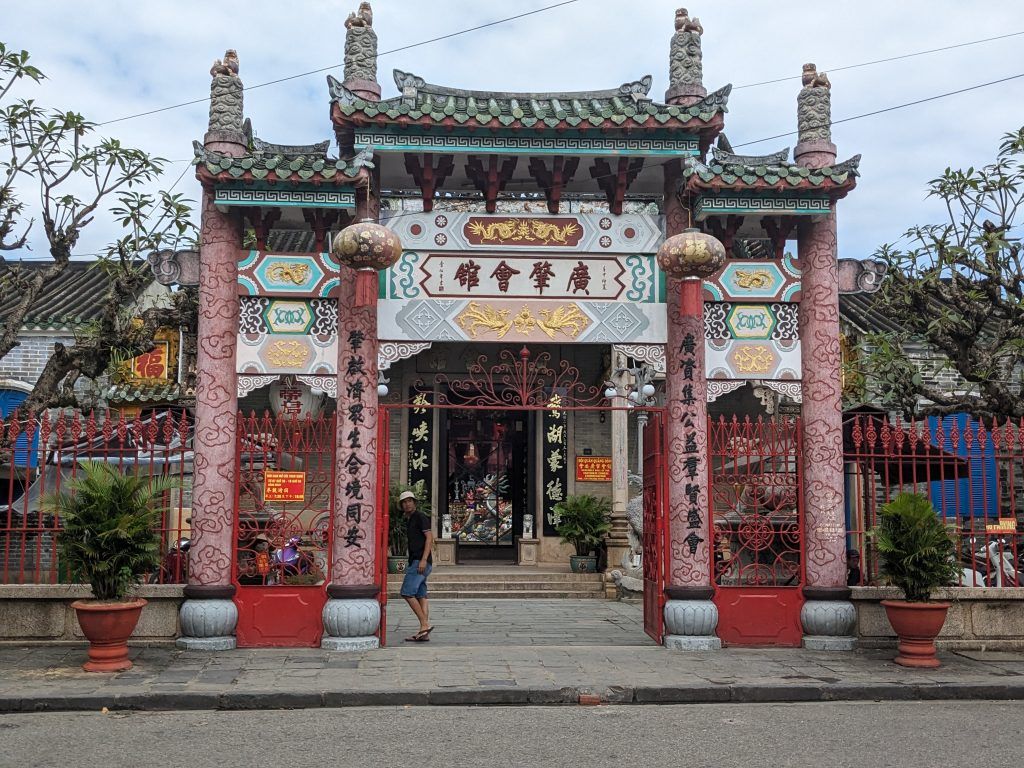
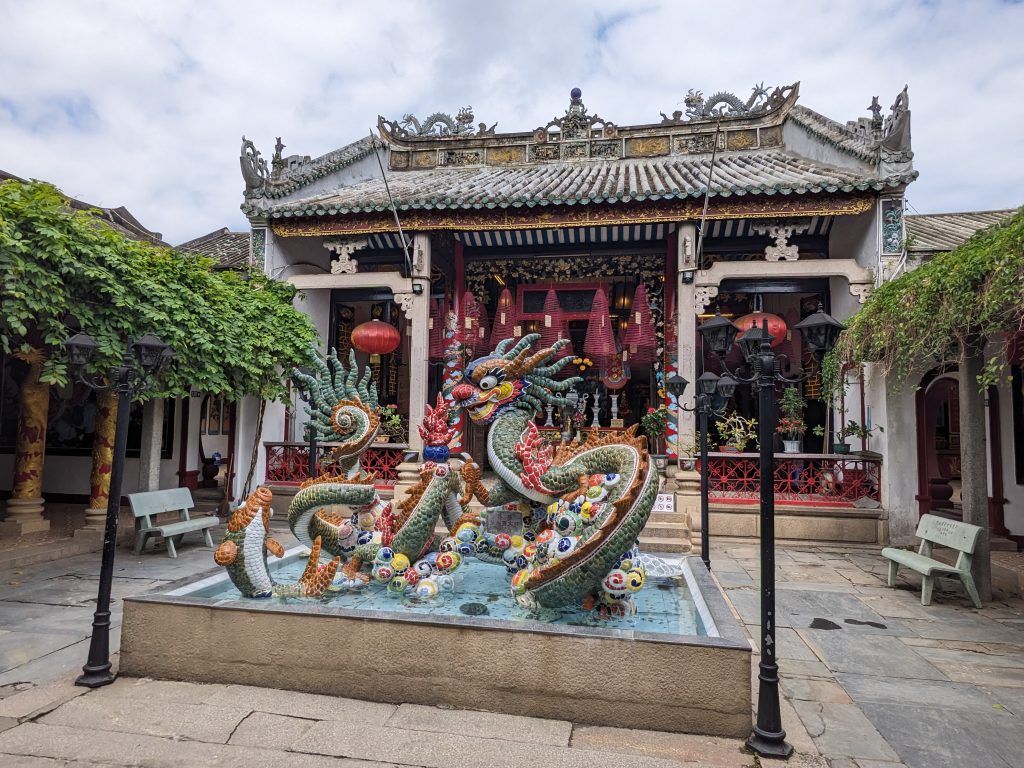
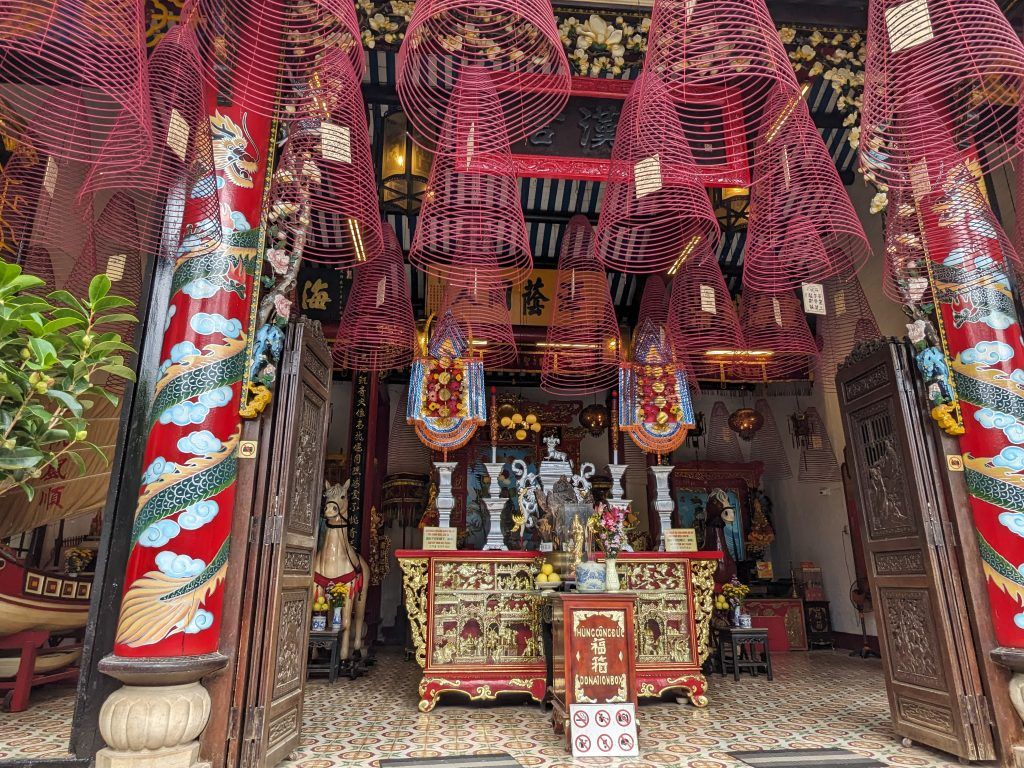
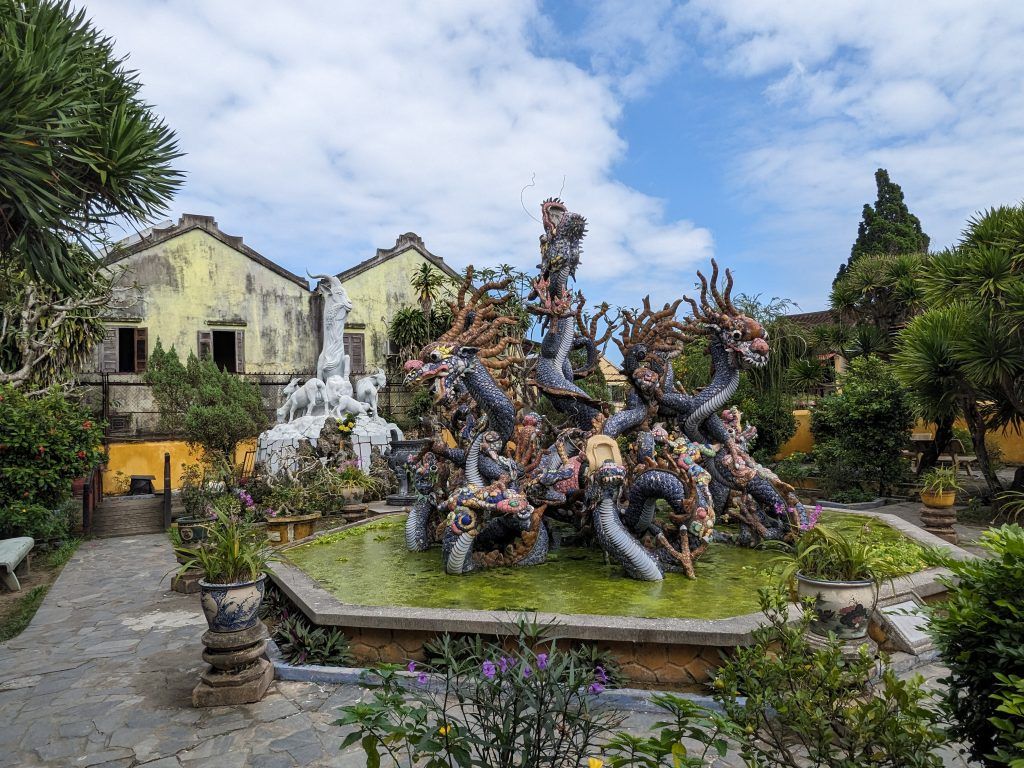
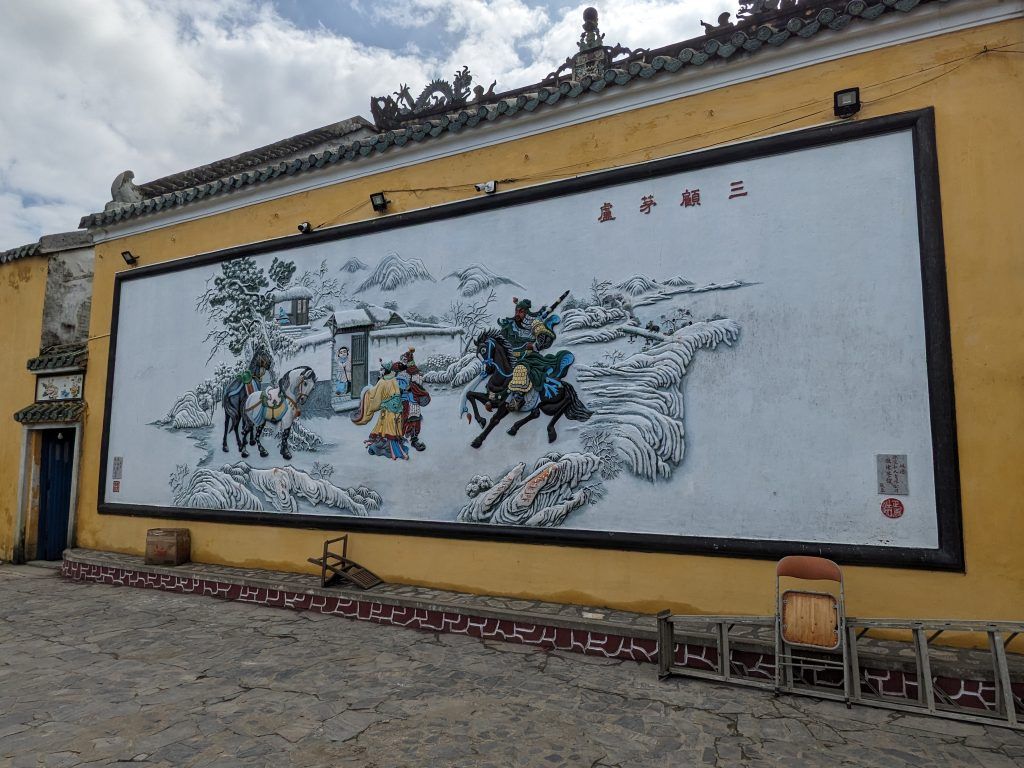
The Hoi An Traditional Art House hosts three half hour shows each day of traditional Vietnamese folk dance and music that provides a nice taste of Vietnamese culture.
At night, as the sun goes down, the crowds increase.
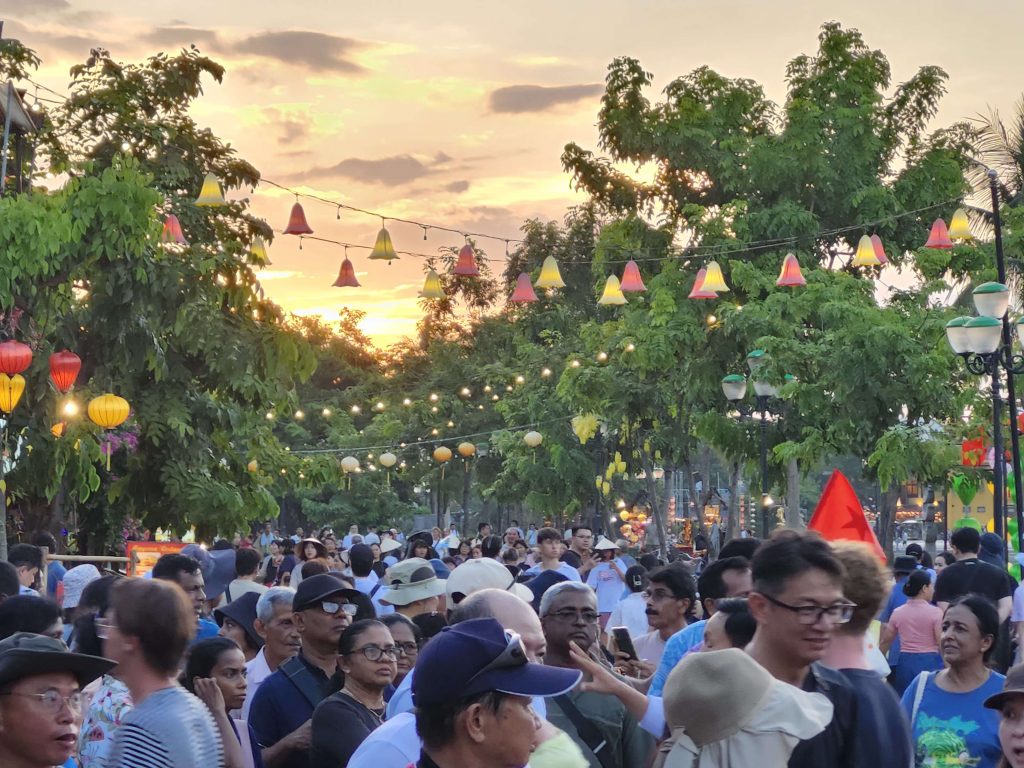
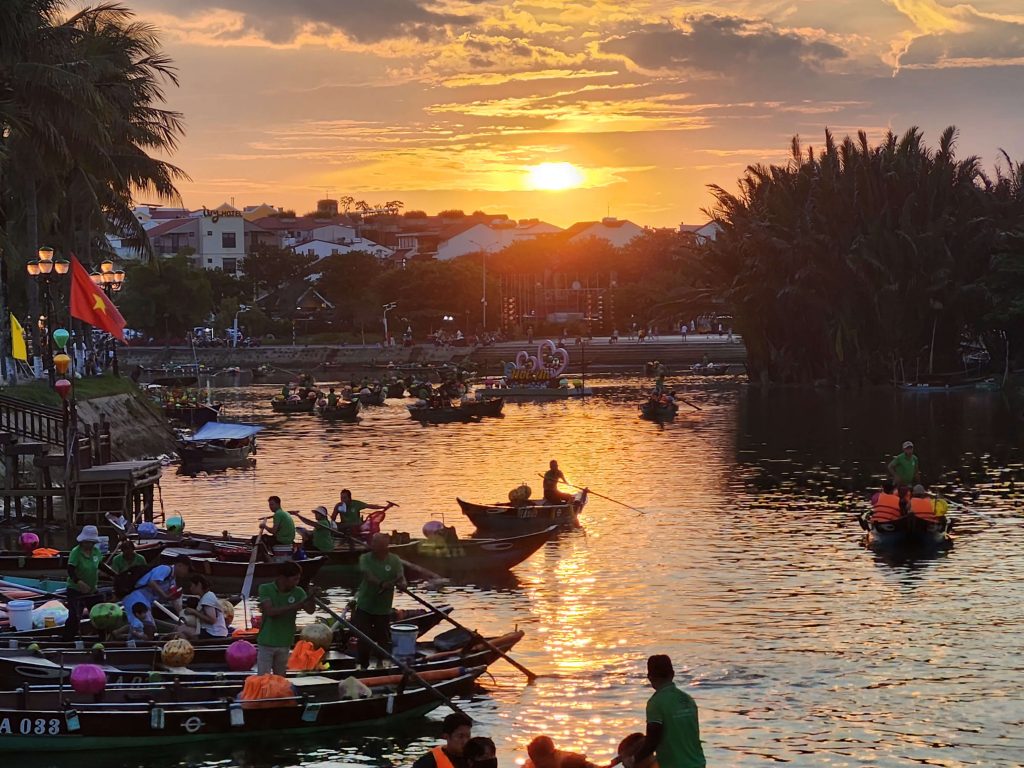
It’s when Hoi An becomes even more magical as people ride the river in the lantern boats which creates a wonderfully charming scene.
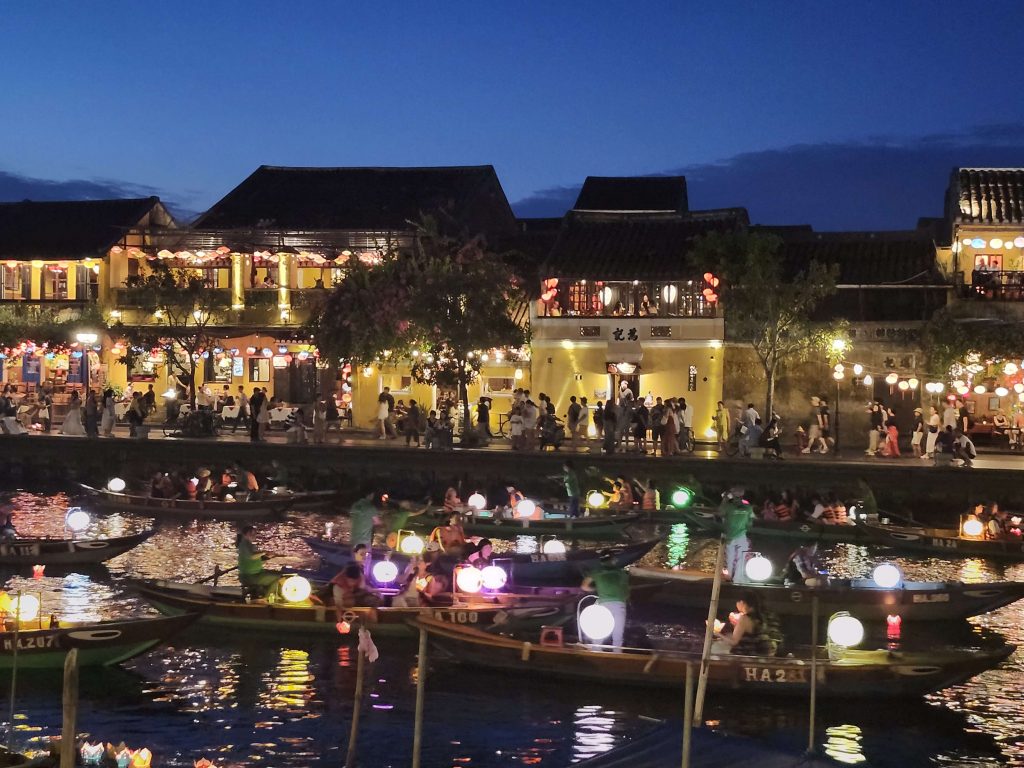
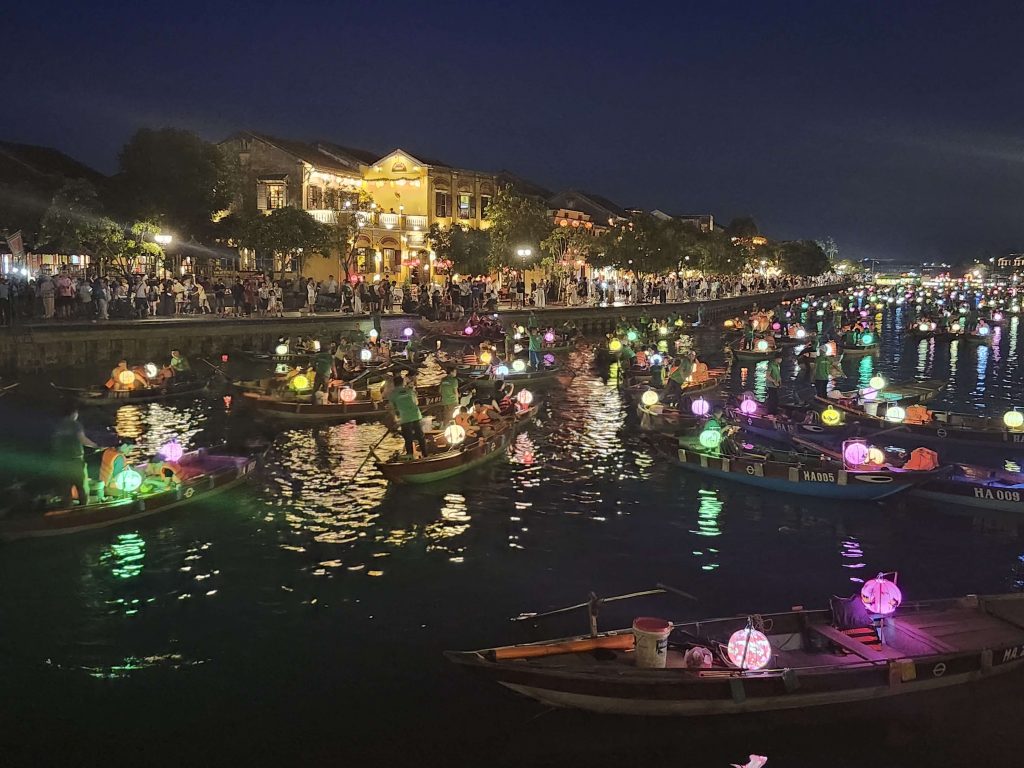
An Bang Beach
Hoi An is right along the coast and the closest public beach is An Bang Beach. It’s a beautiful area, but every inch of the beach in both directions was taken up by different beach chair setups.
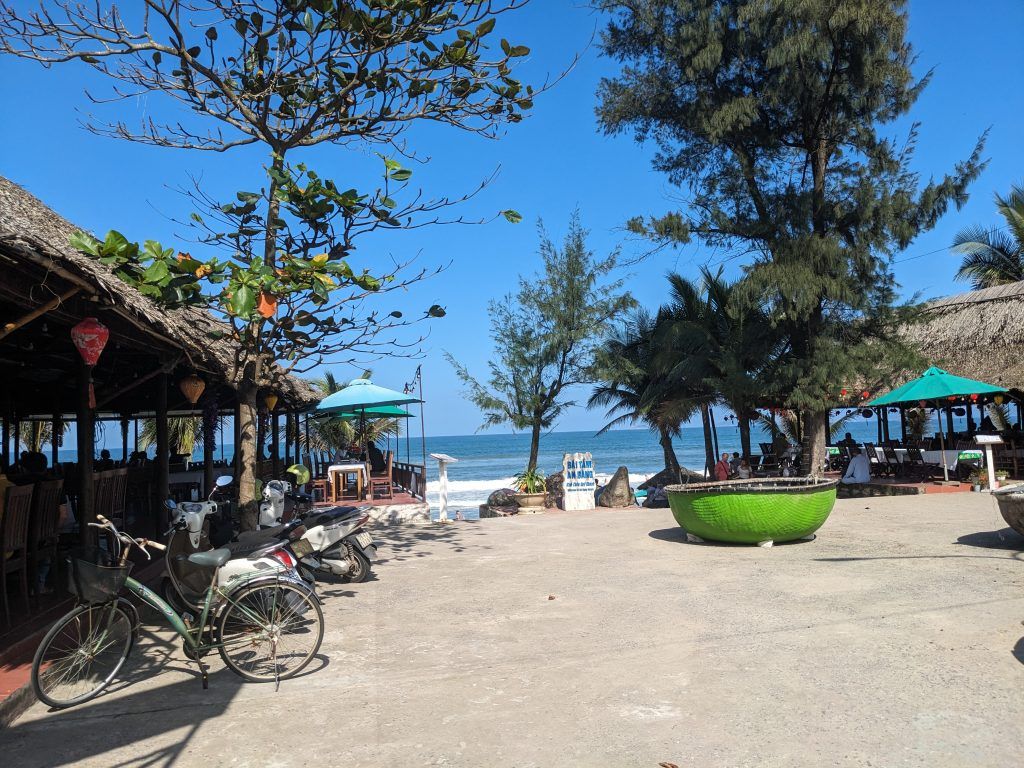
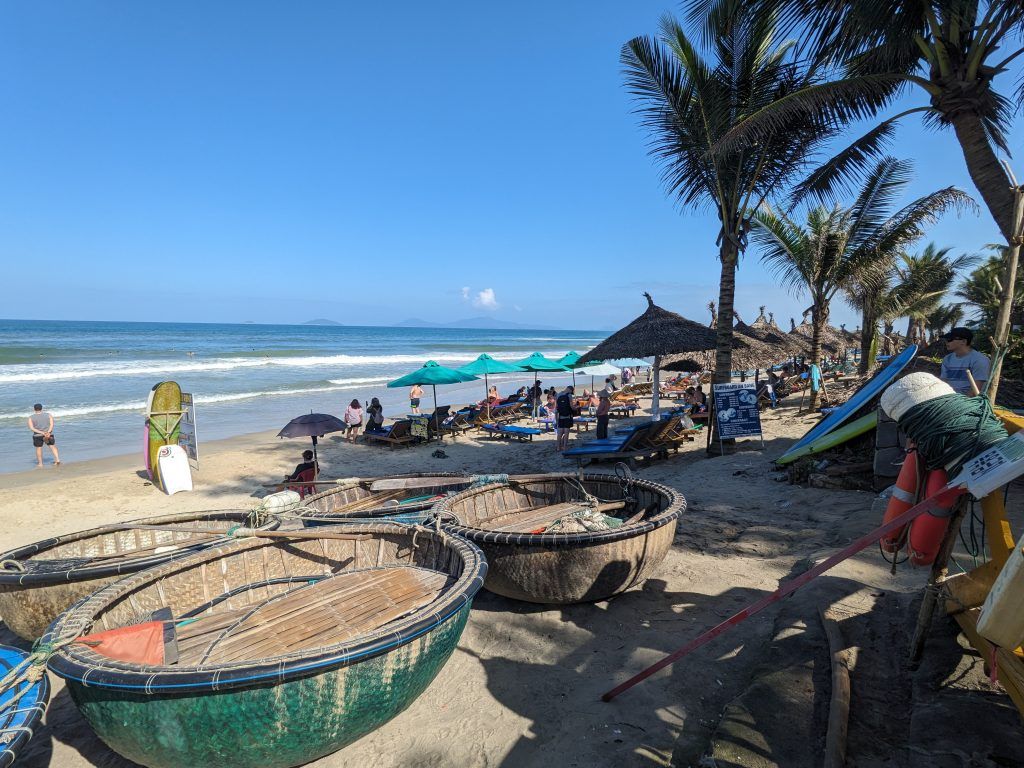
There’s a few blocks of stores and restaurants and, overall, it has a nice, relaxing feel to it.
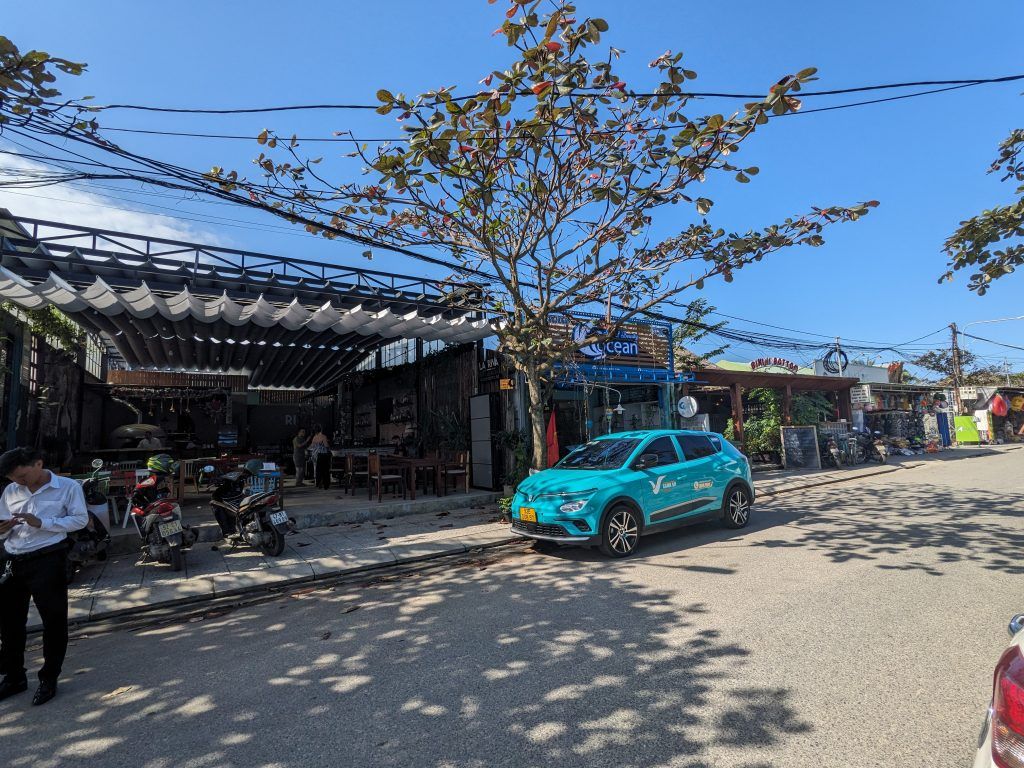
The Road to the Lady Buddha
The Lady Buddha Da Nang is the tallest Buddha statue in Vietnam. It’s 220 feet (67 meters) tall and is perched atop of a lotus-shaped temple. It’s just outside the city of Danang and about 30 km from where I was staying in Hoi An. It was a nice mid-day scooter ride.
Danang is a much larger city than Hoi An and its beaches reflect that. They are large and wide and have rows of hotels and condomiums facing them.
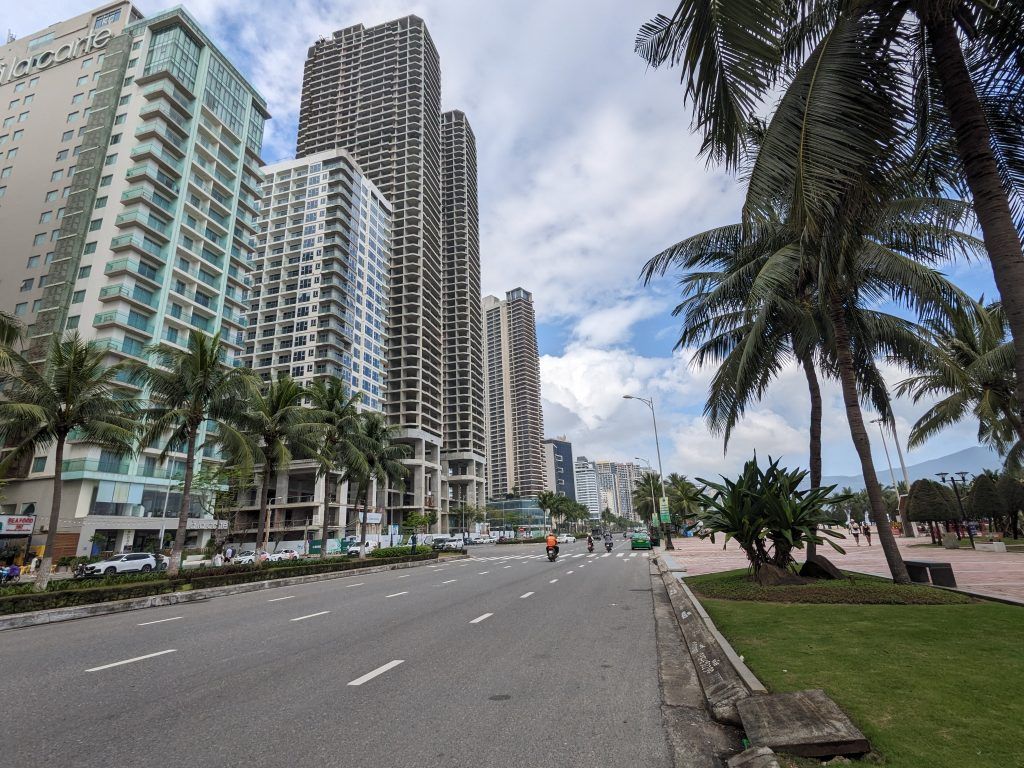
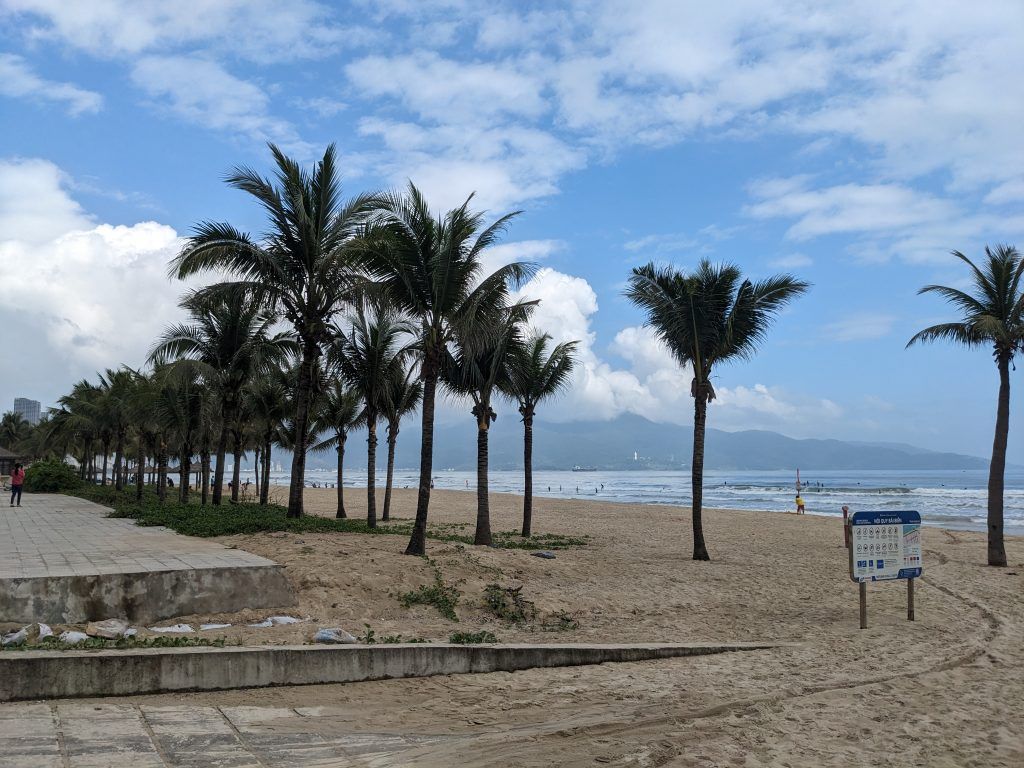
You can see the Lady Buddha from Danang’s beaches.
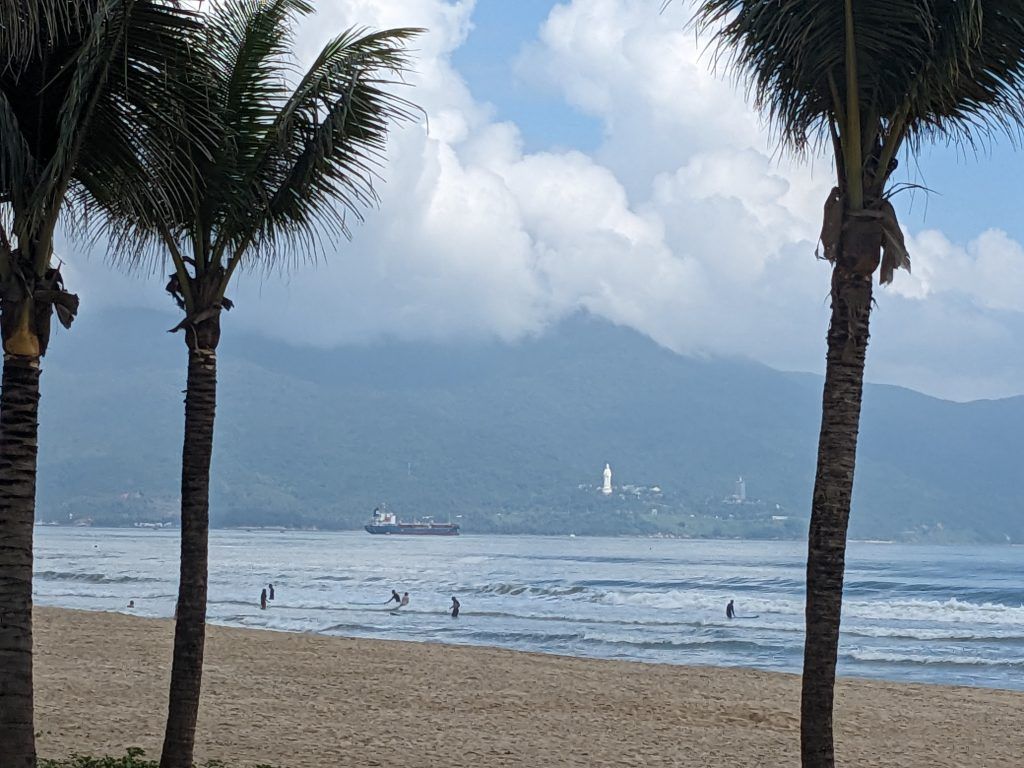
The entranceway to the Lady Buddha.
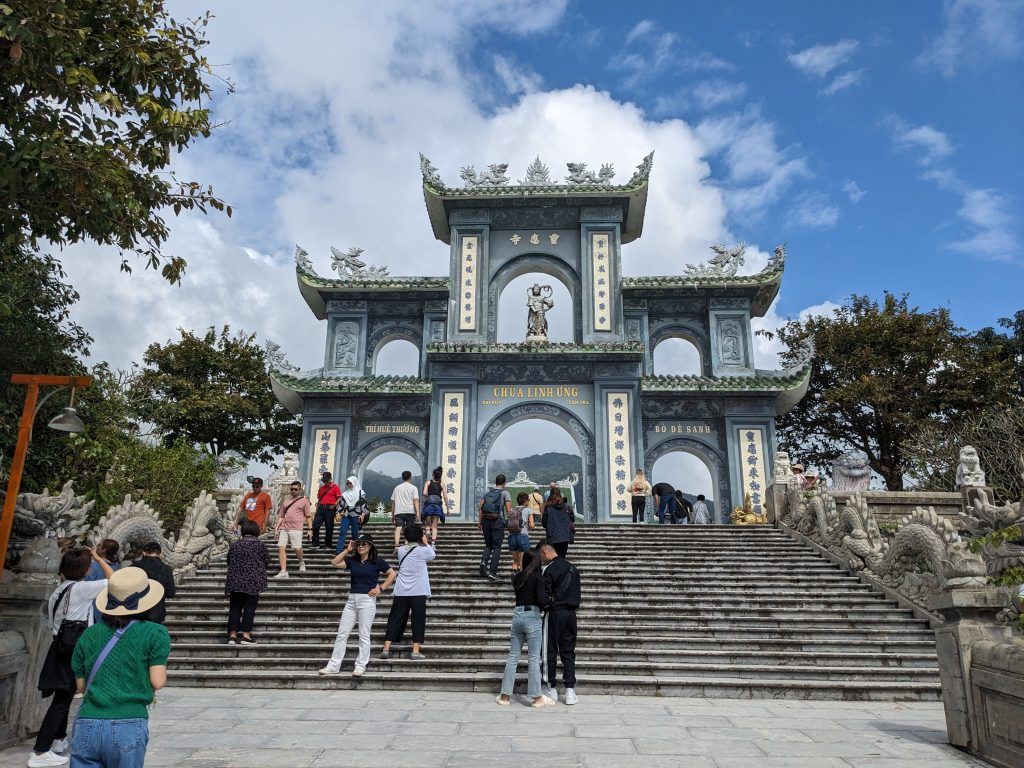
One of the temples on the grounds.
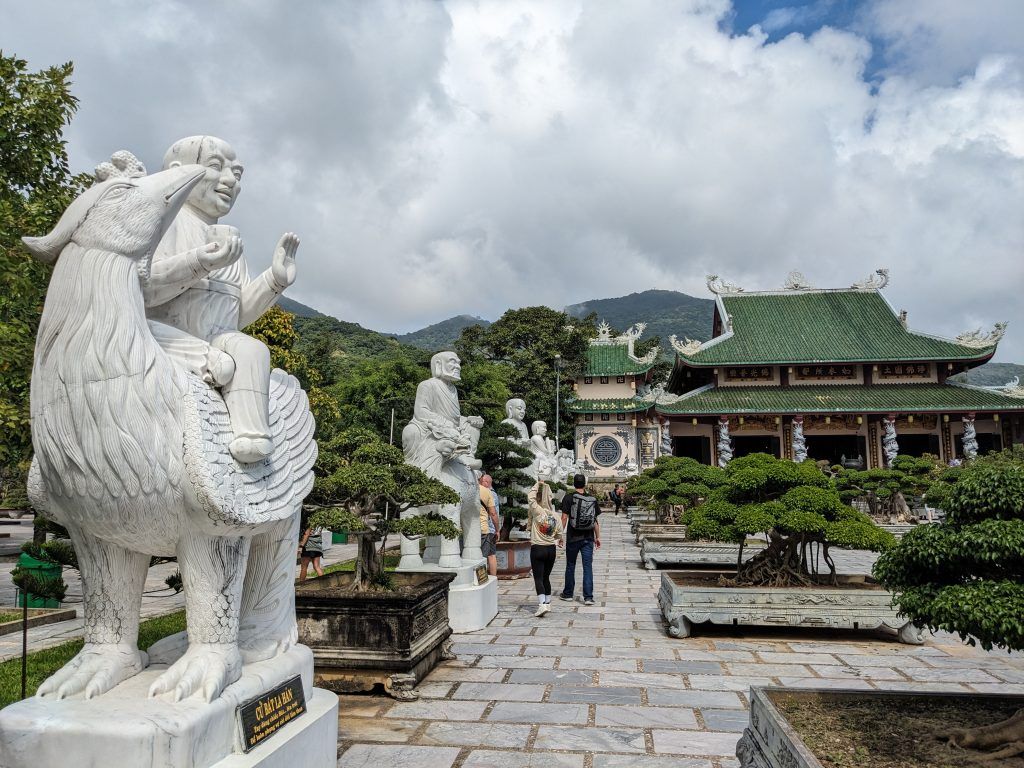
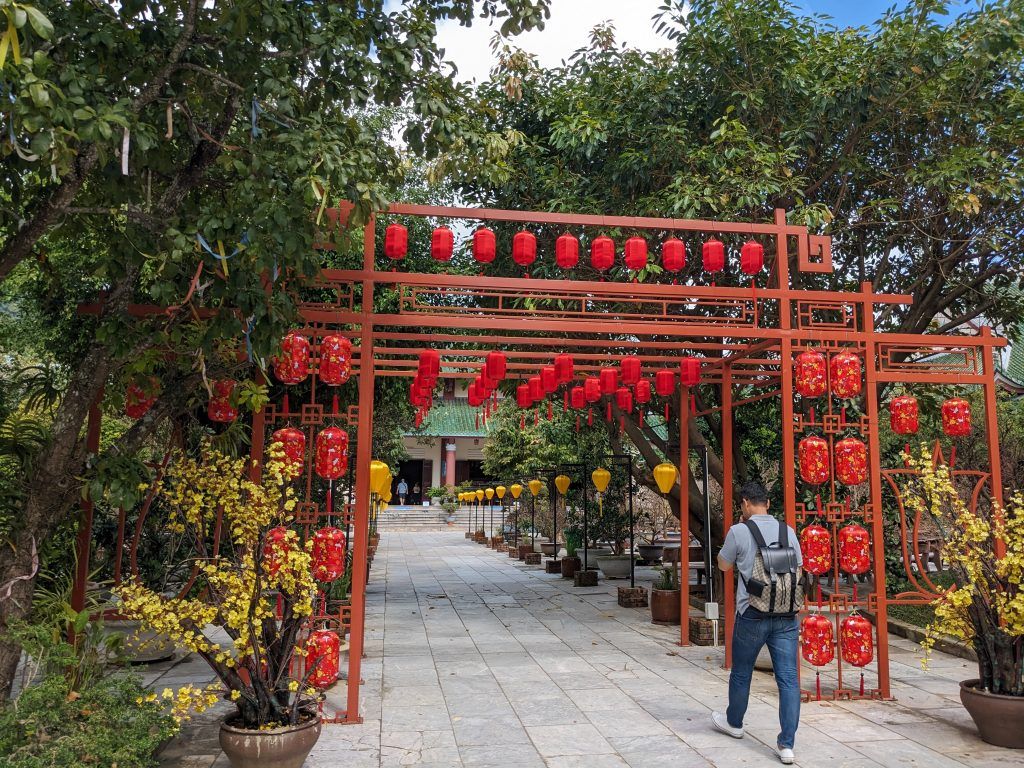
It wouldn’t be a temple in SE Asia without monkeys. This one provides a nice view of Danang behind it through the trees.
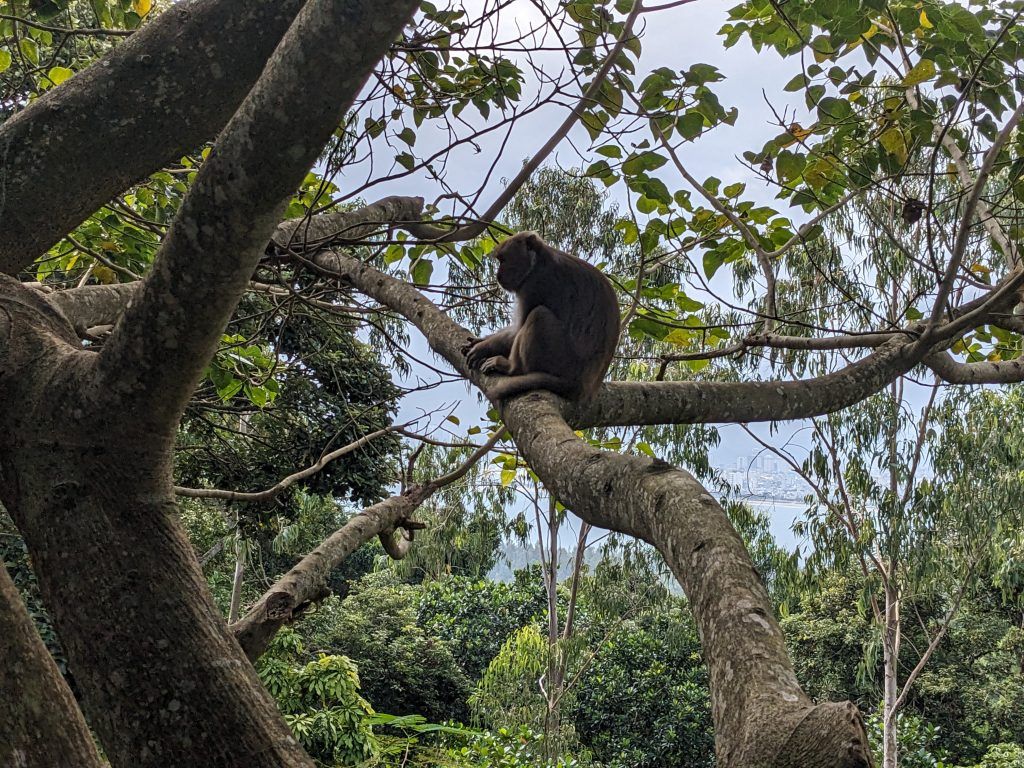
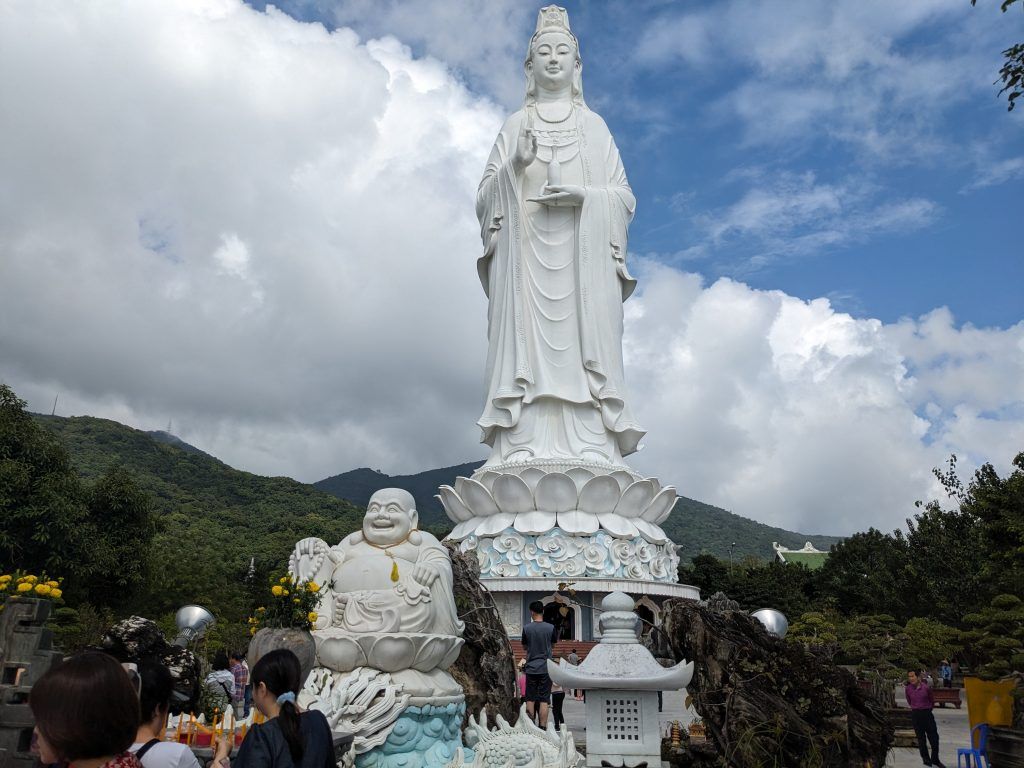
The roads around the Lady Buddha have some beautiful views.
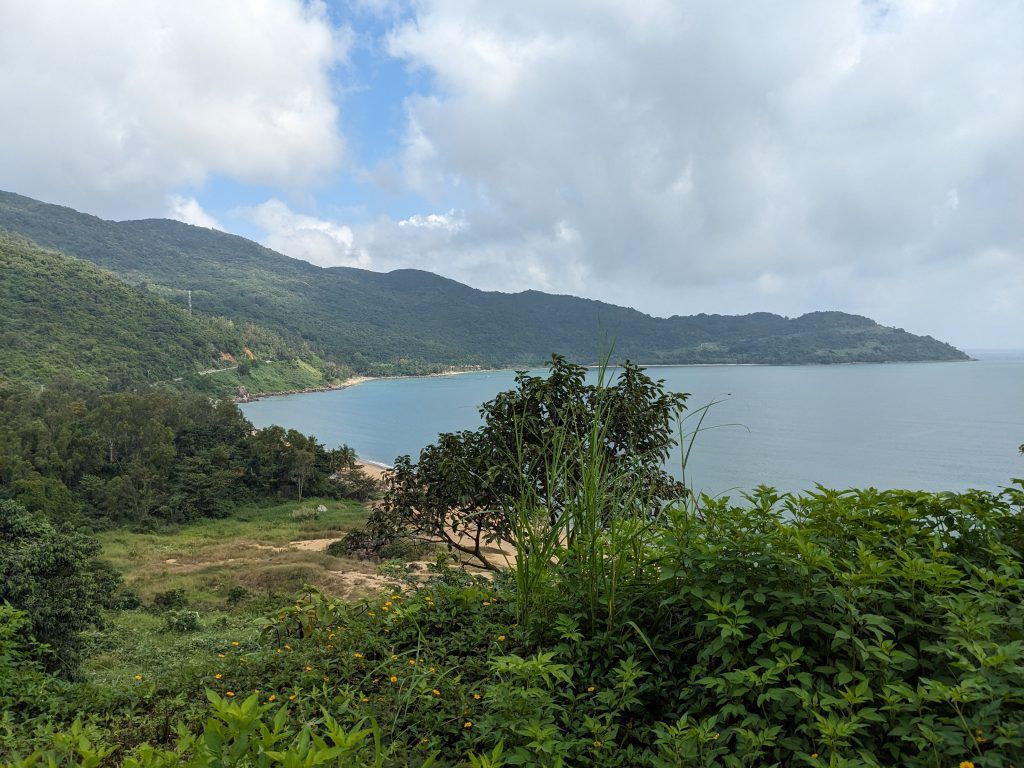
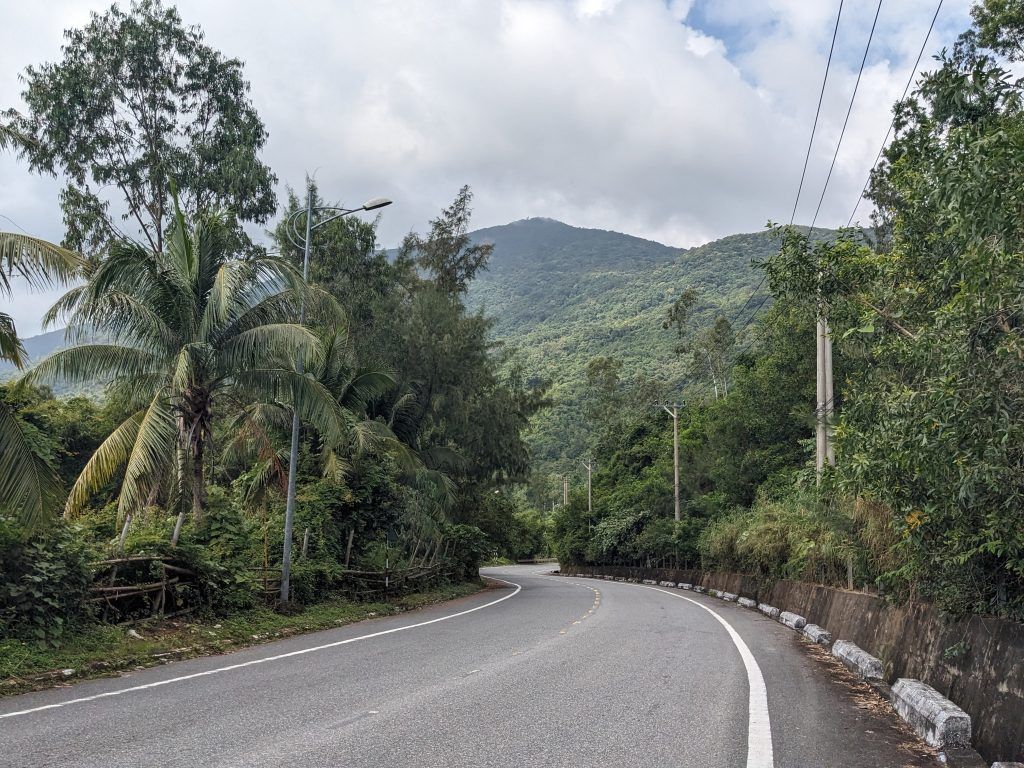
The back of the Lady Buddha and the beaches of Danang off to the left.
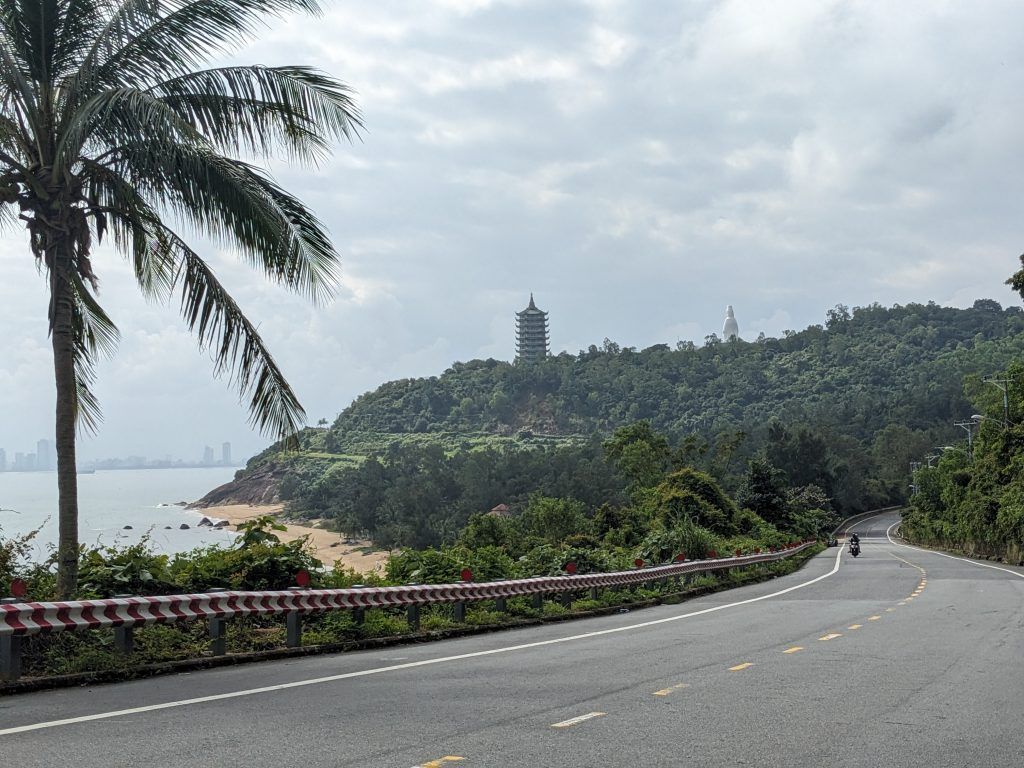
The Ruins of My Son
My Son is a cluster of ruins located about an hour outside of Hoi An. It was the religious center of the kingdom of the Cham people, who ruled the general area of South Vietnam for over 1,000 years. There are about 70 buildings in the complex and it was built from the 4th to the 14th century. It was a site of Hindu religious ceremonies and the burial place of kings and national heroes.
During the Vietnam War My Son was used by the Vietcong as a field headquarters. This resulted in a US bombing raid in 1969 that unfortunately destroyed the most important temple at the site and damaged several others.
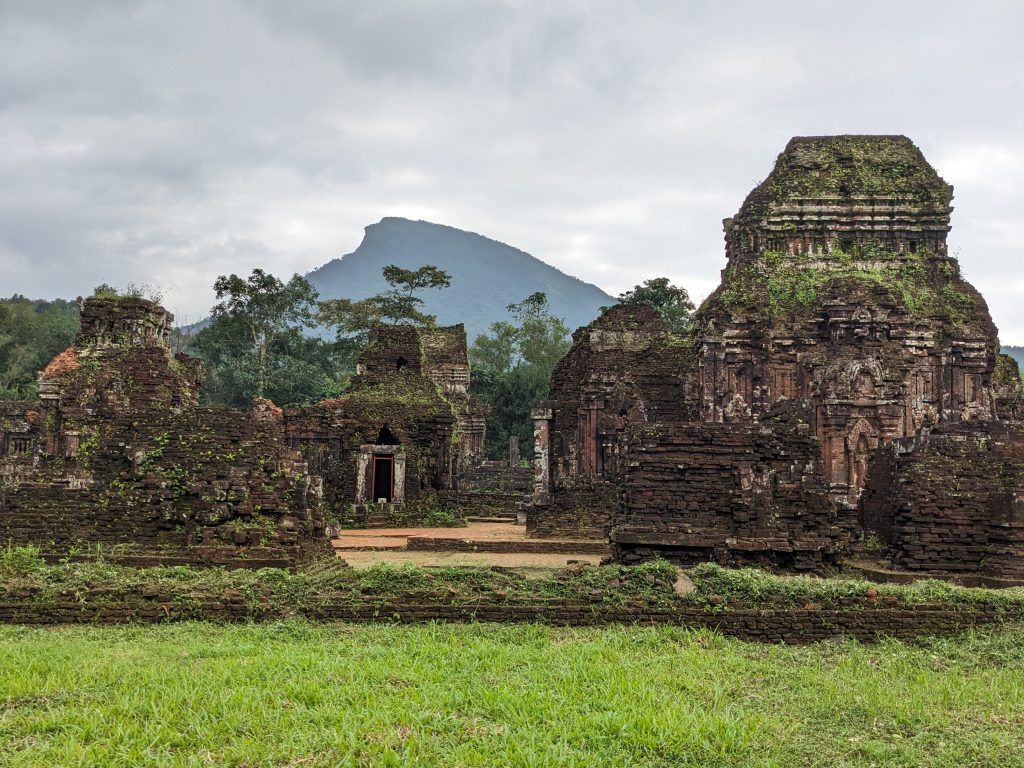
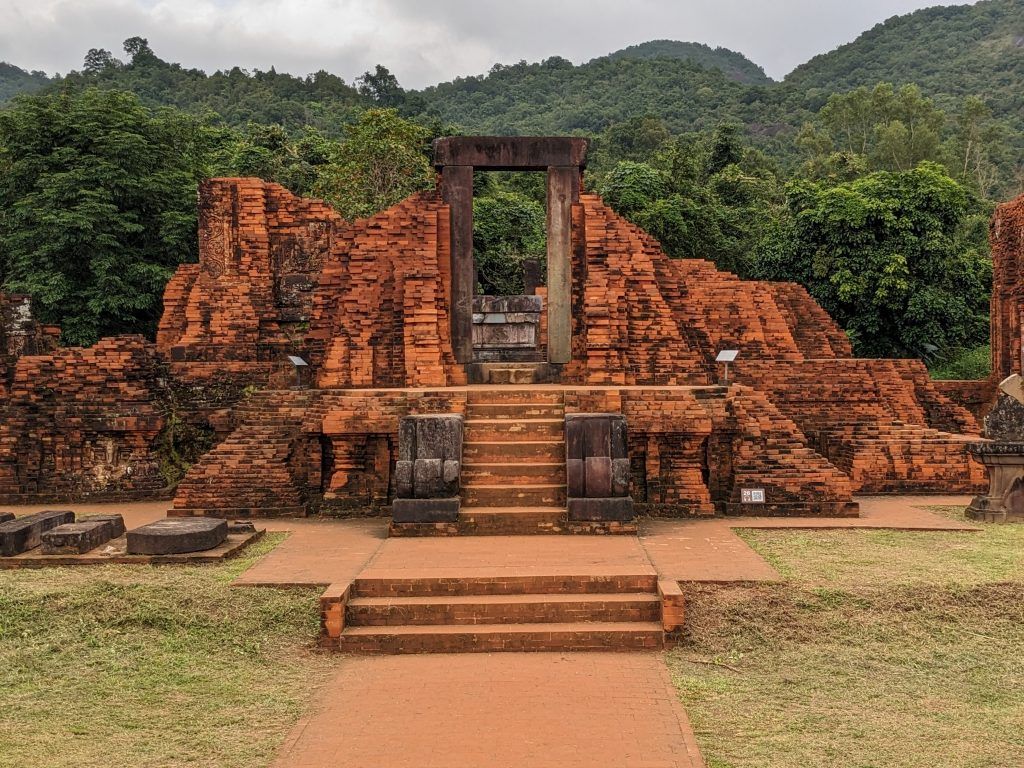
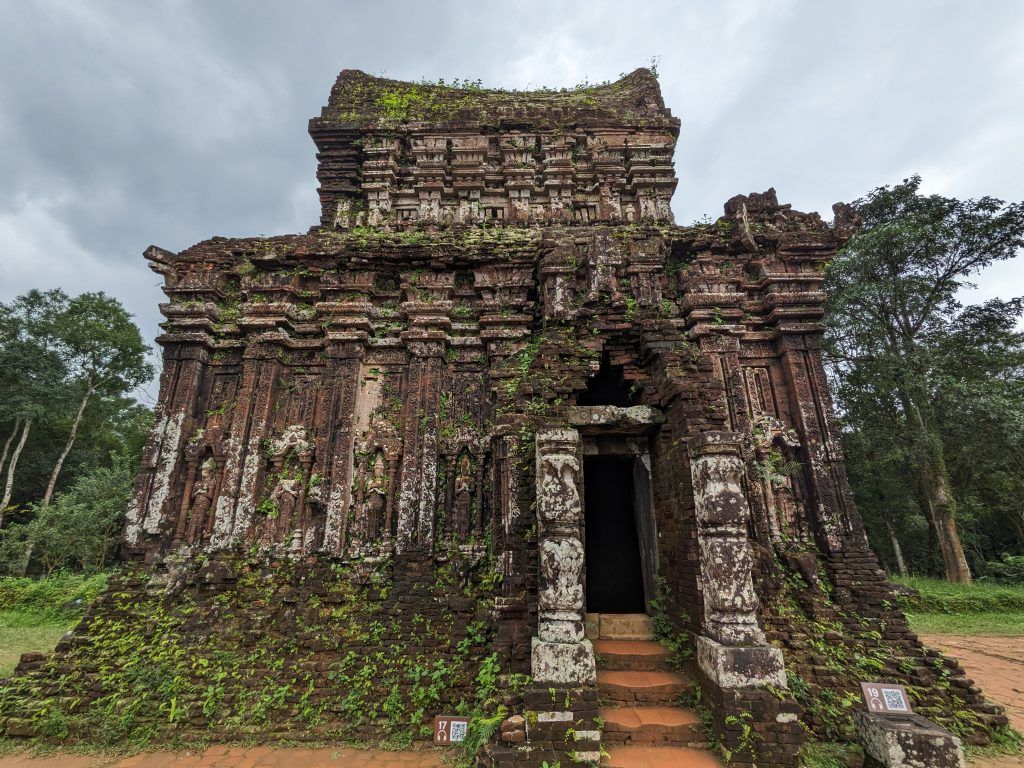
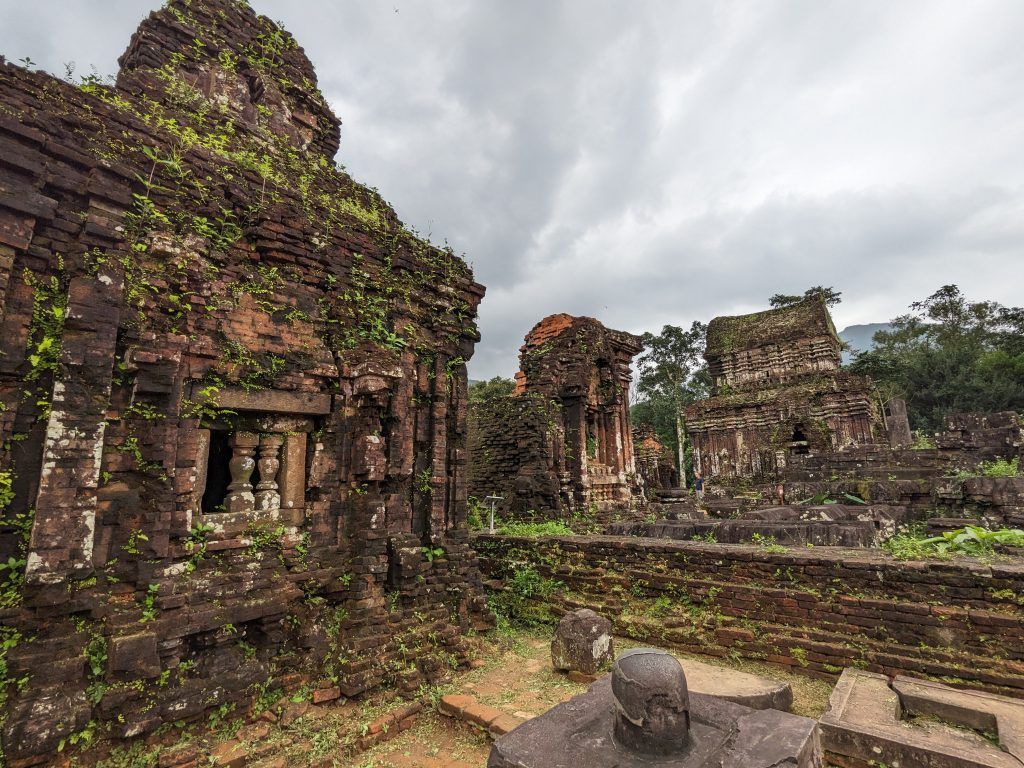
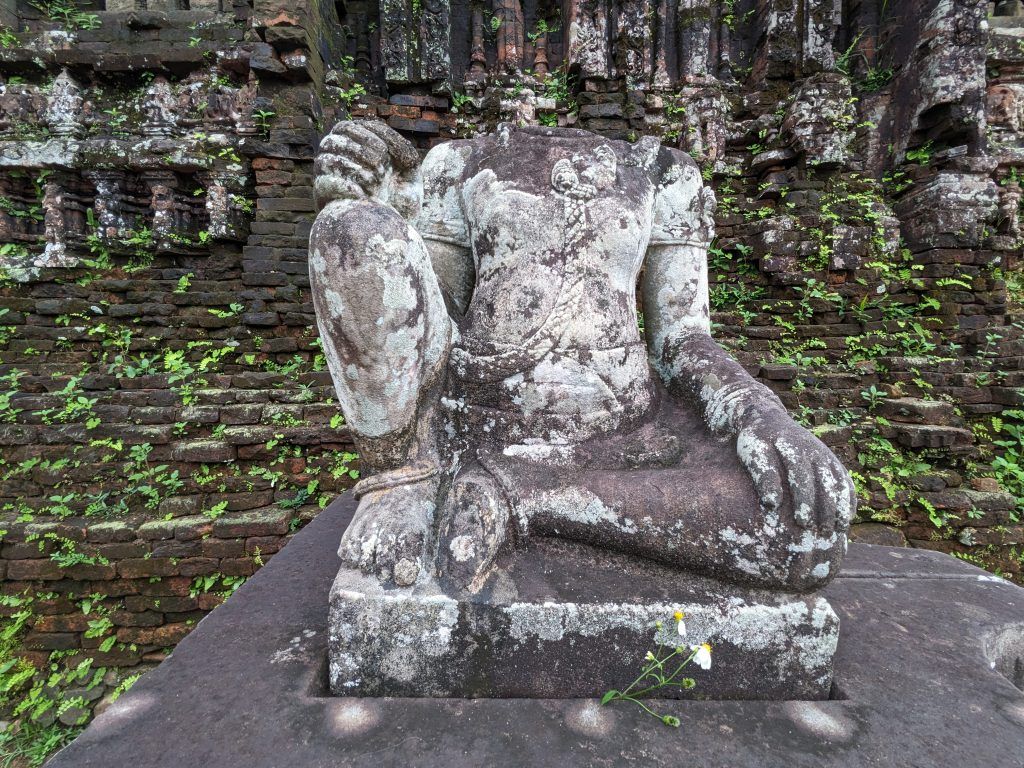
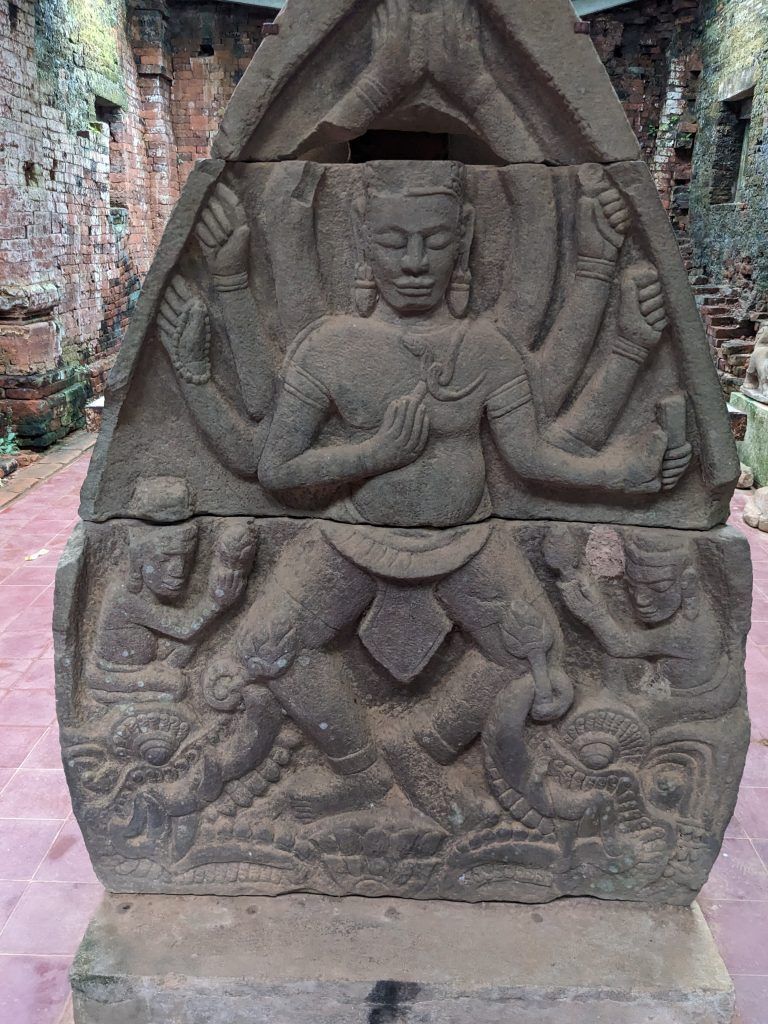
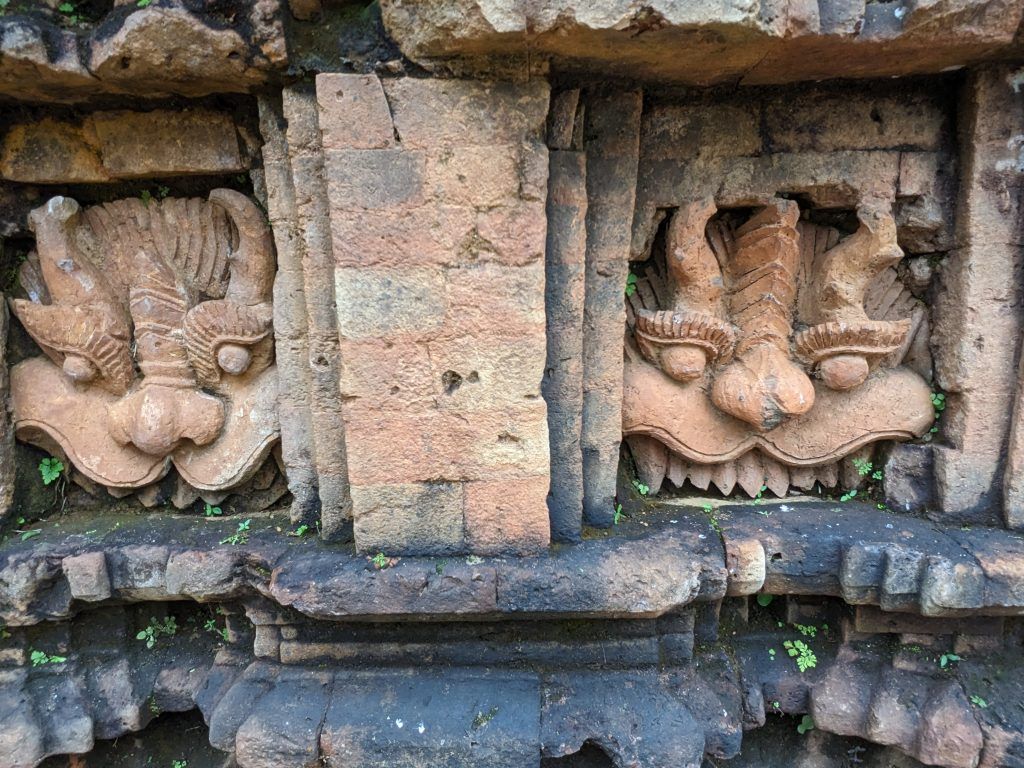
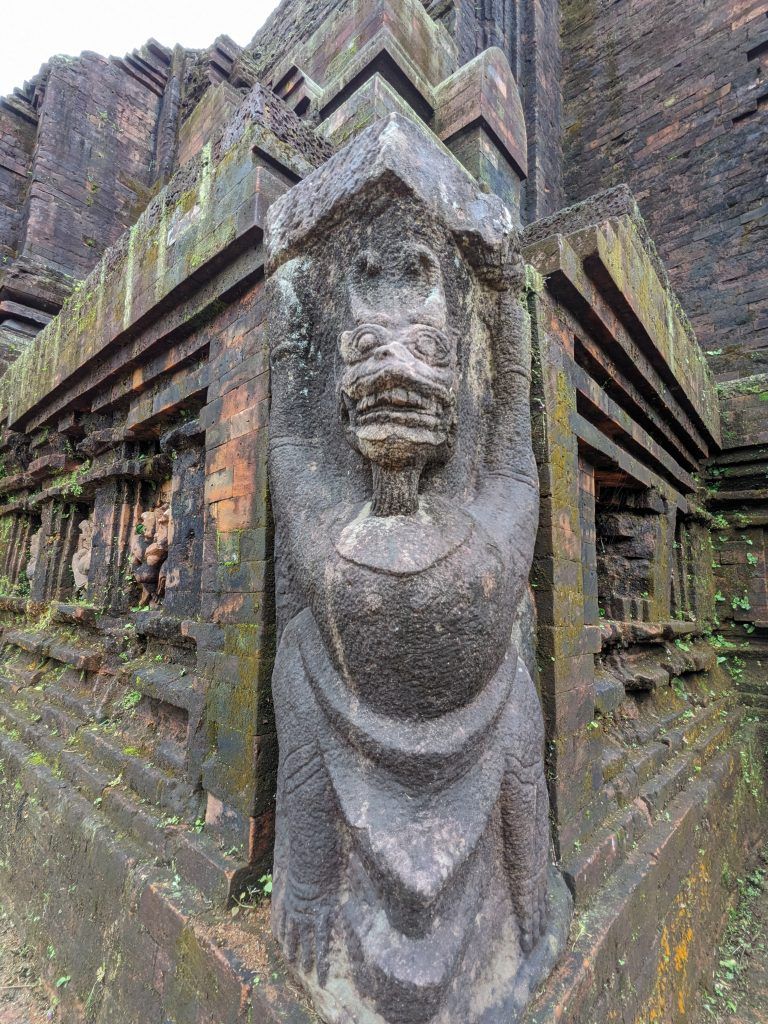
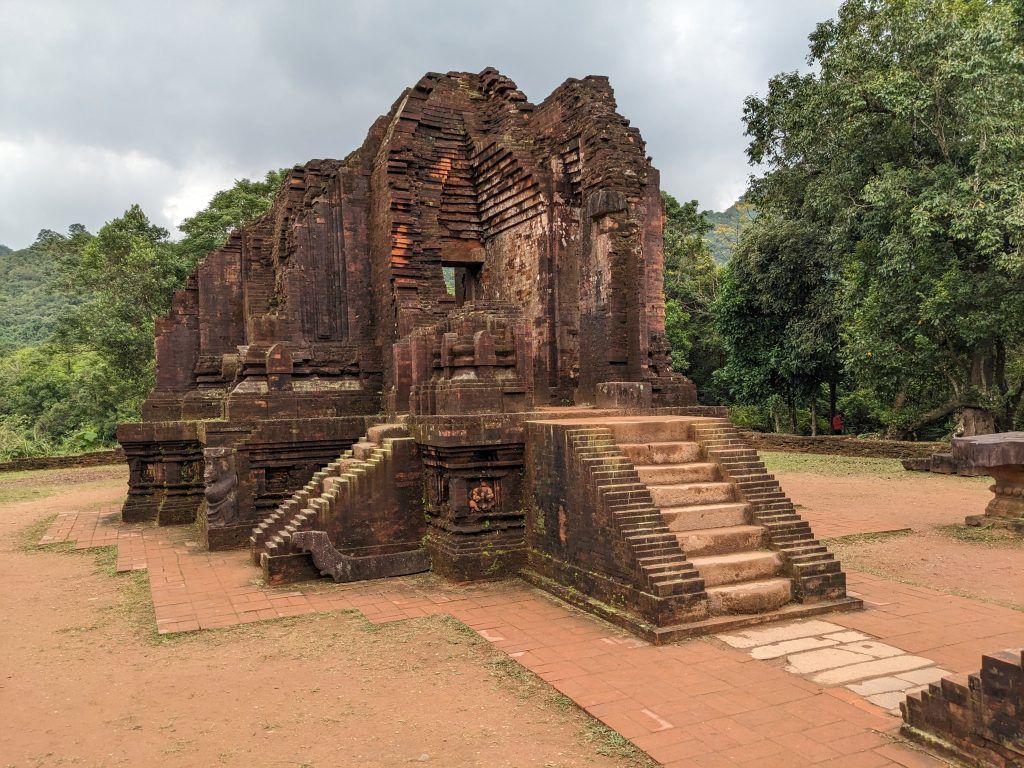
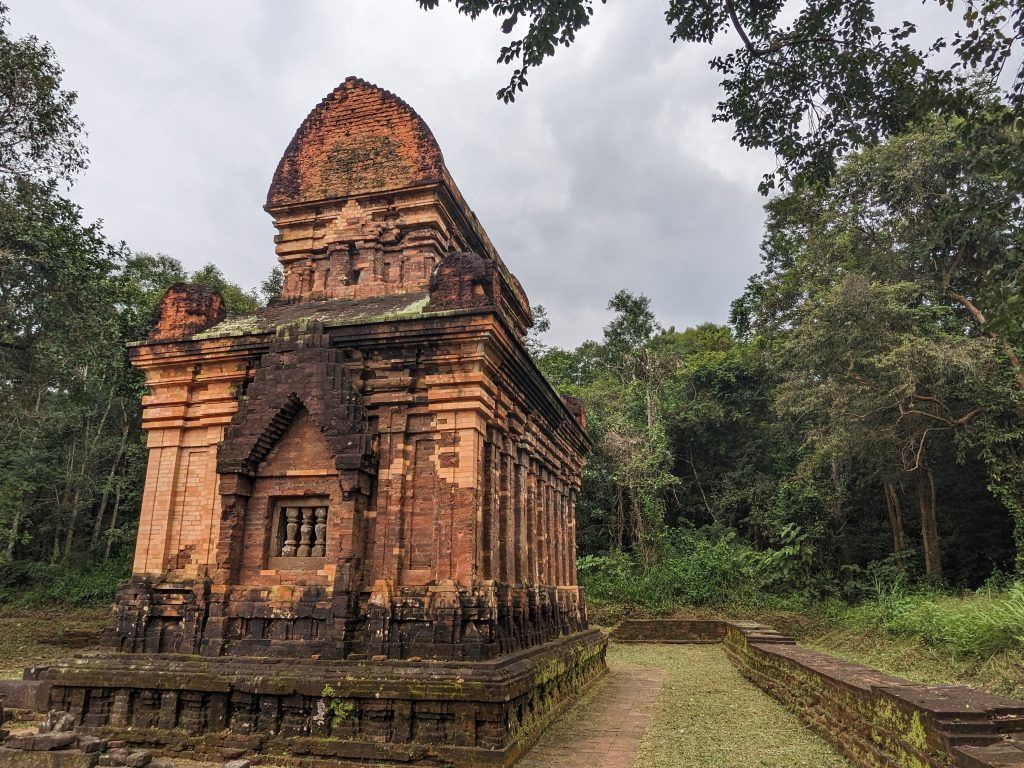
This map shows the extensive trade routes the Cham civilization were a part of for hundreds of years.
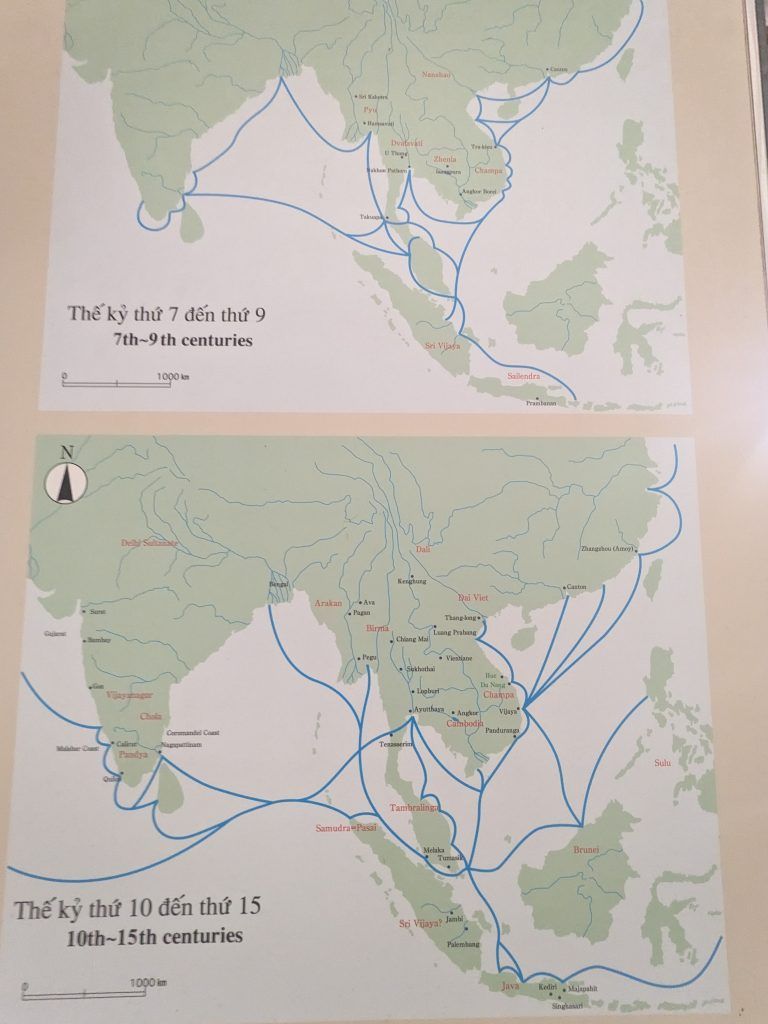
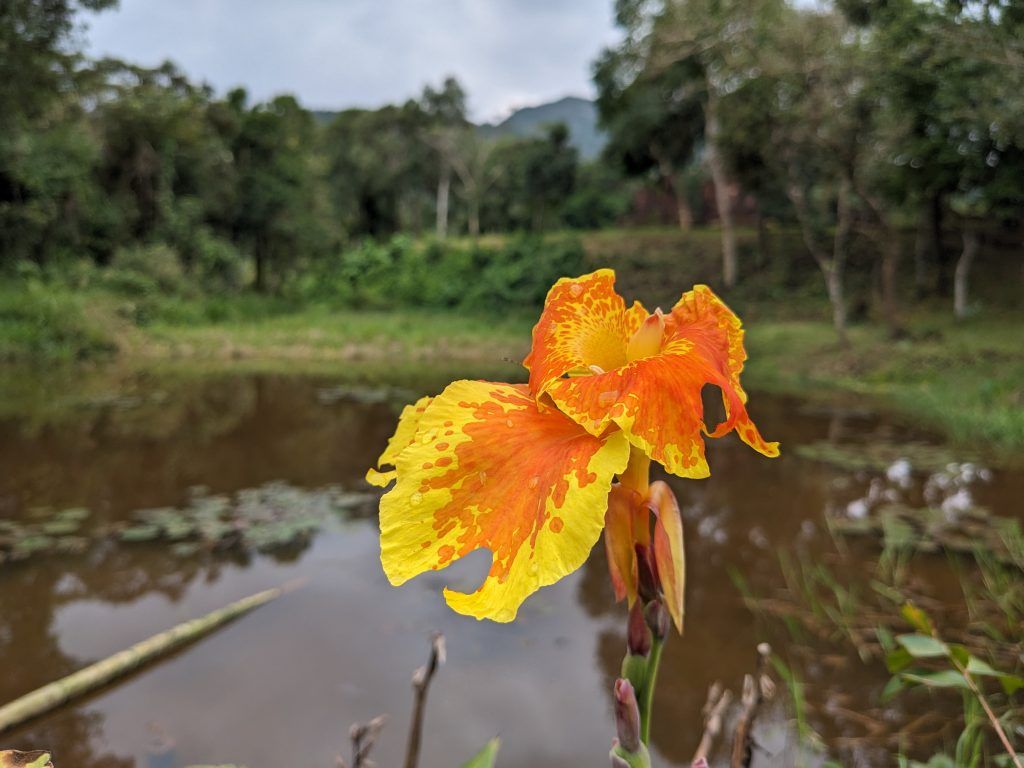
I stayed in a large, relaxing Airbnb in the countryside between Hoi An and An Bang Beach. It’s owned by a Belgium/Vietnamese couple who live there with their kids. There are a couple of other apartments and people tend to stay here for a long time. My 10 night stay was relatively short.
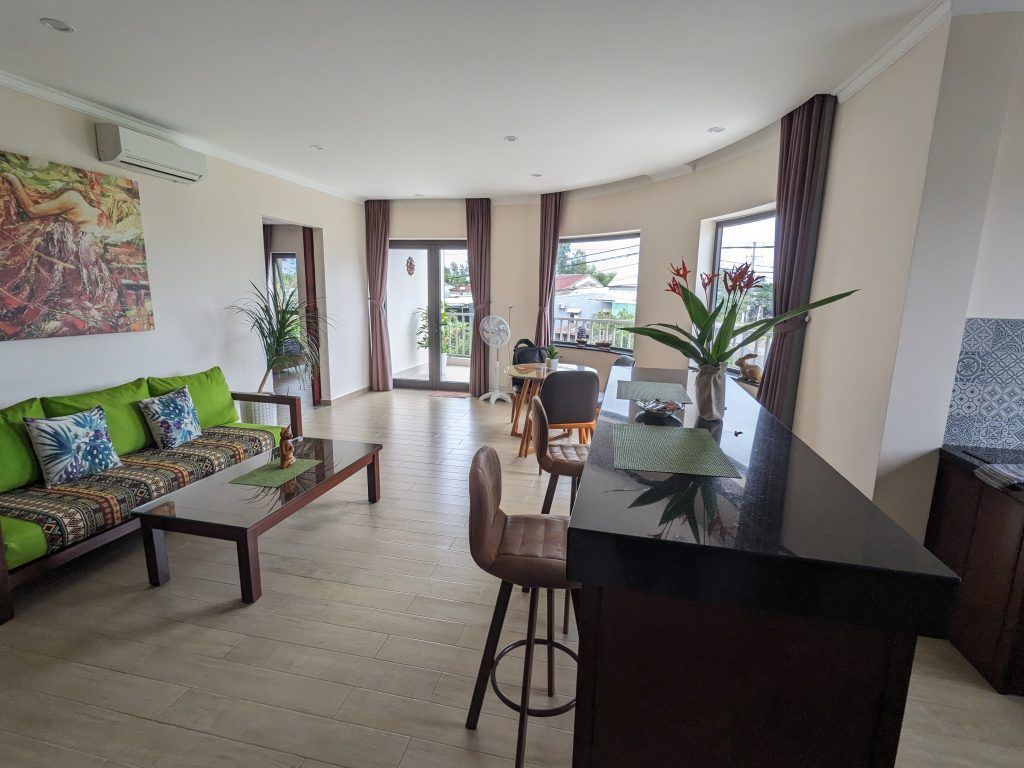
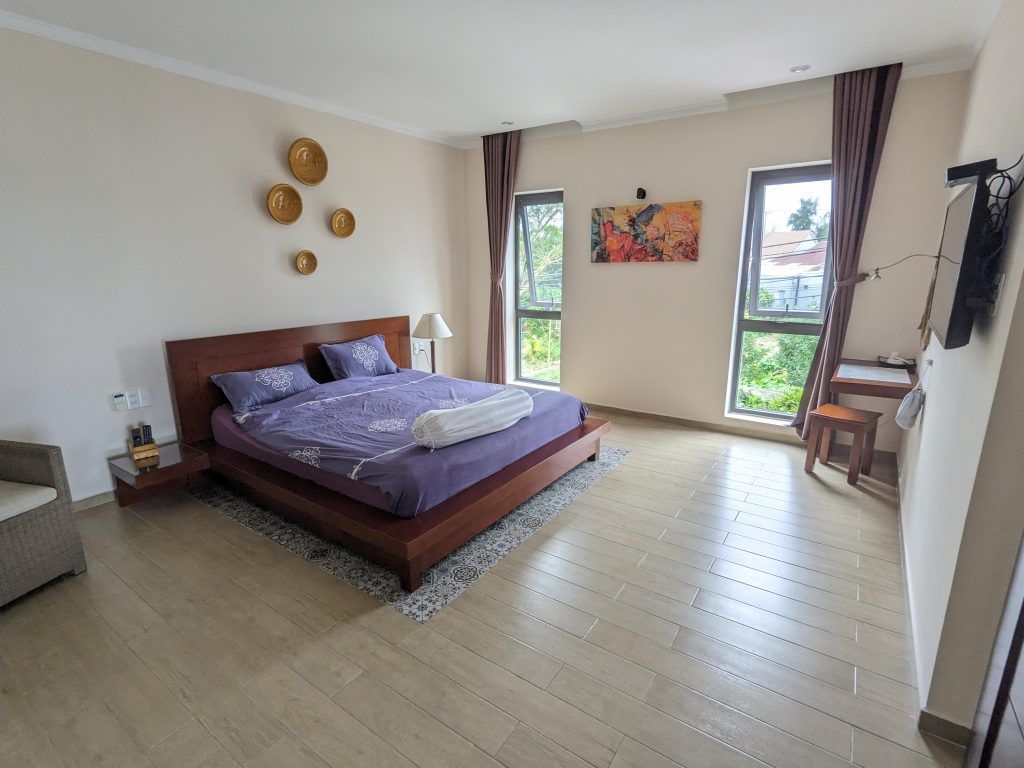
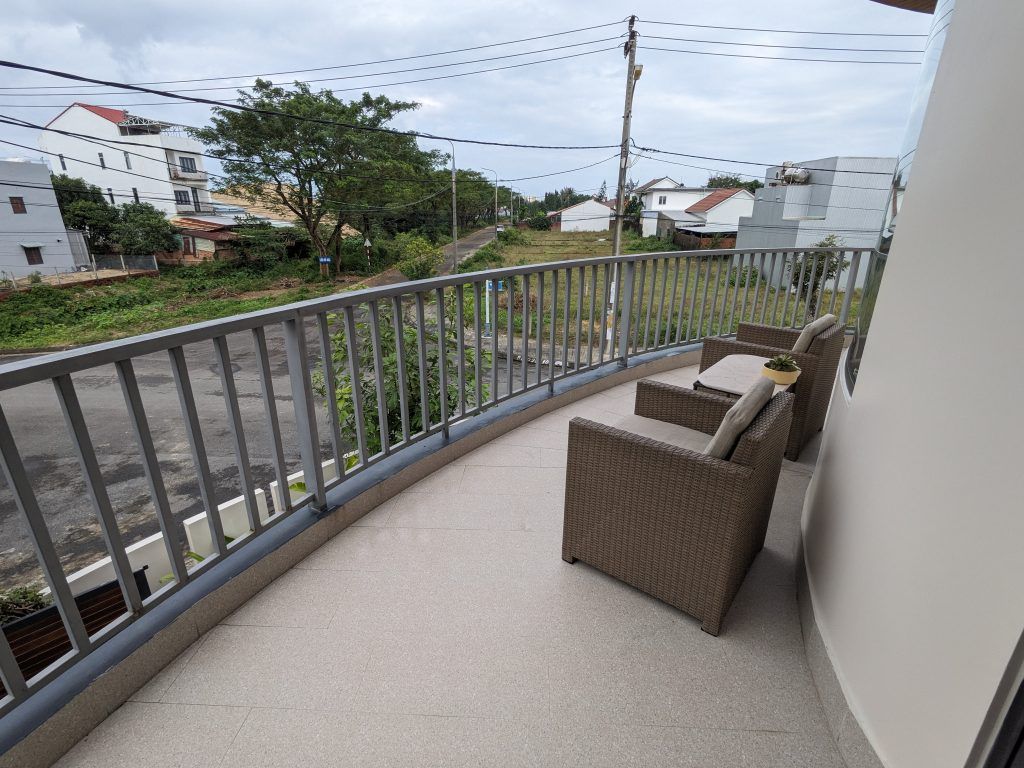
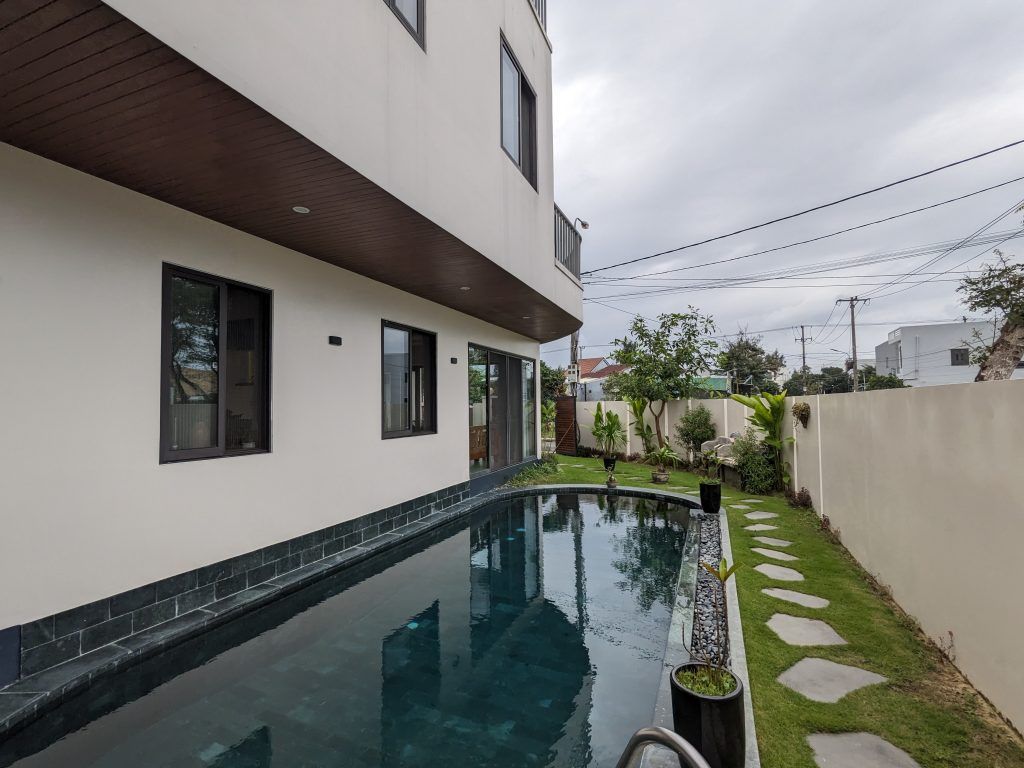
One morning a neighbor was grazing his cows in the empty lot next to our building.
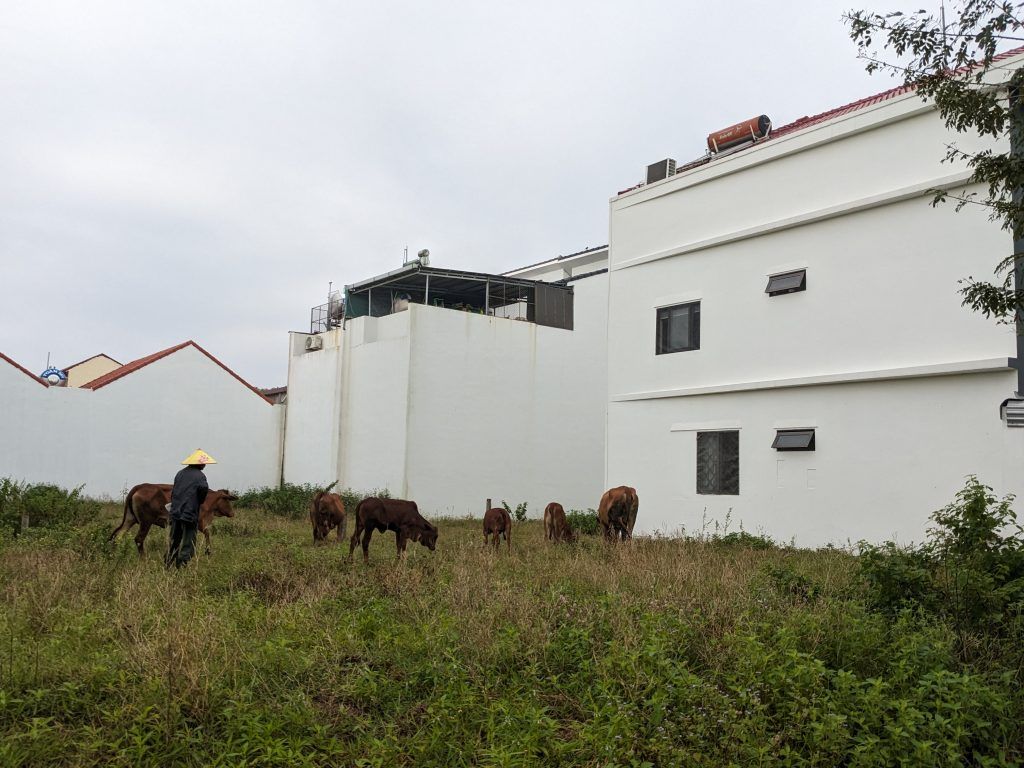
Here’s a short video of me riding around the neighborhood and ending by riding next to the Airbnb.
